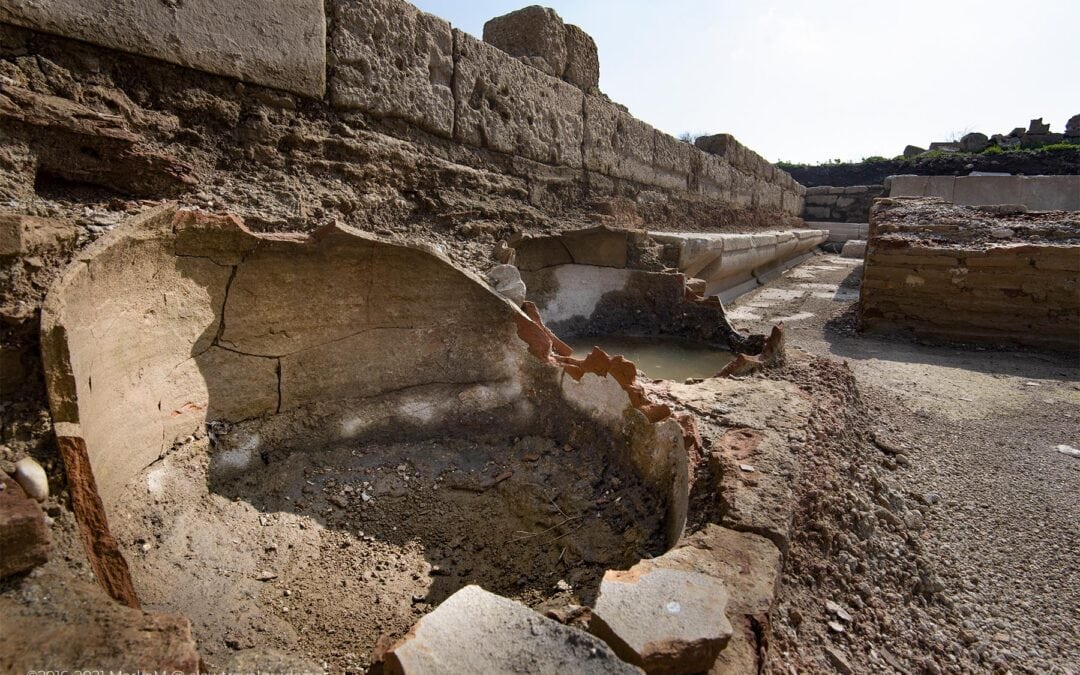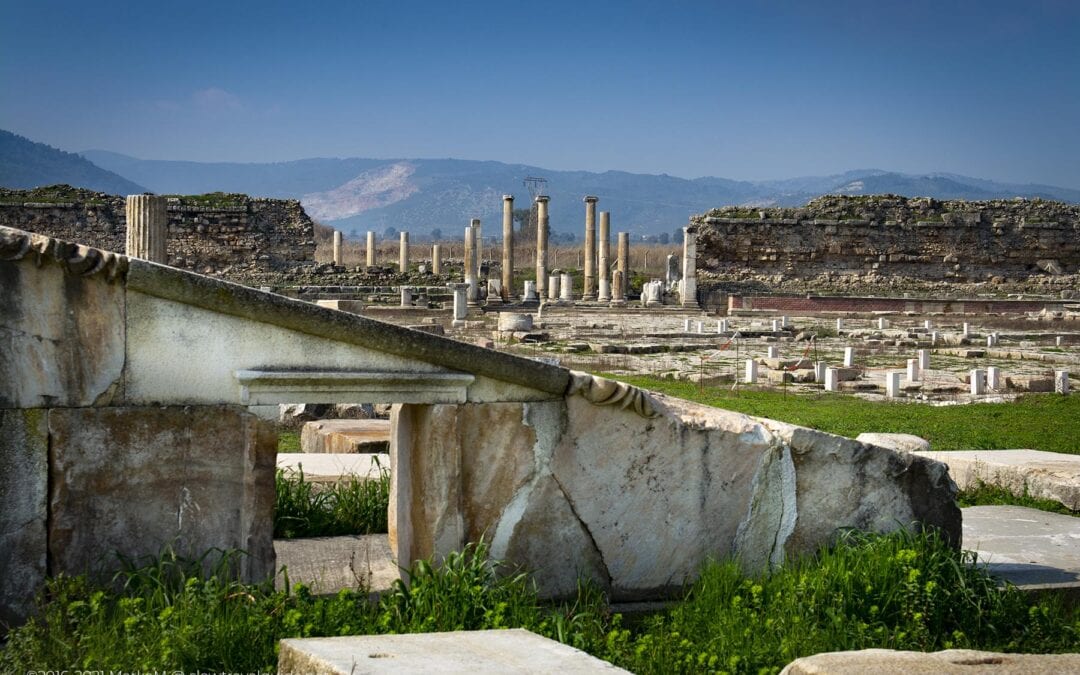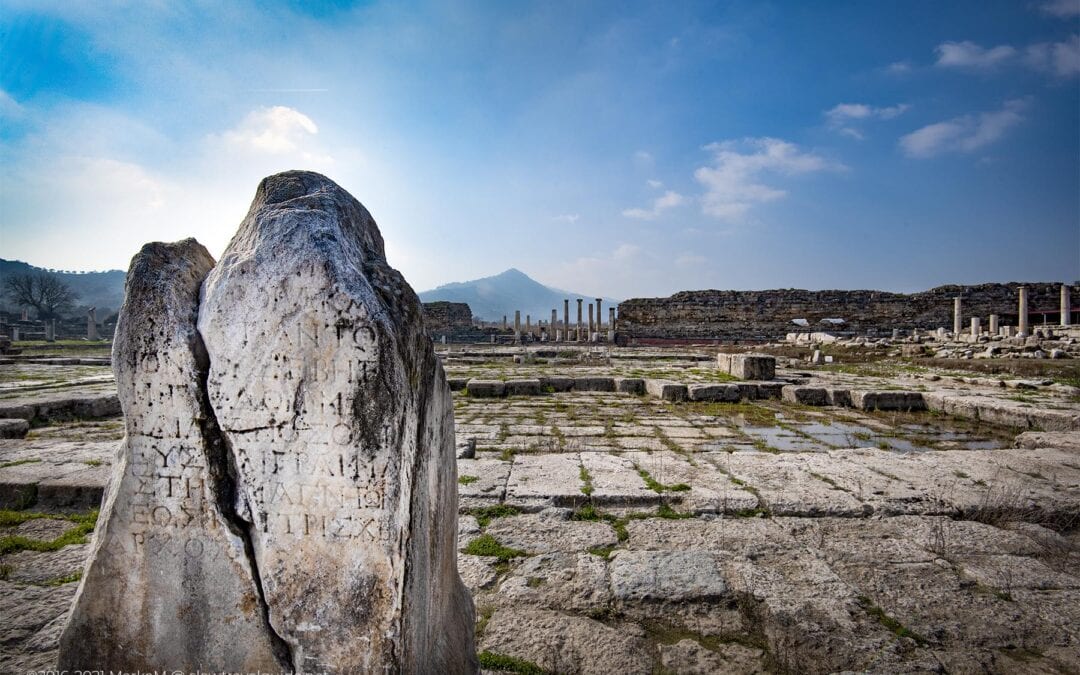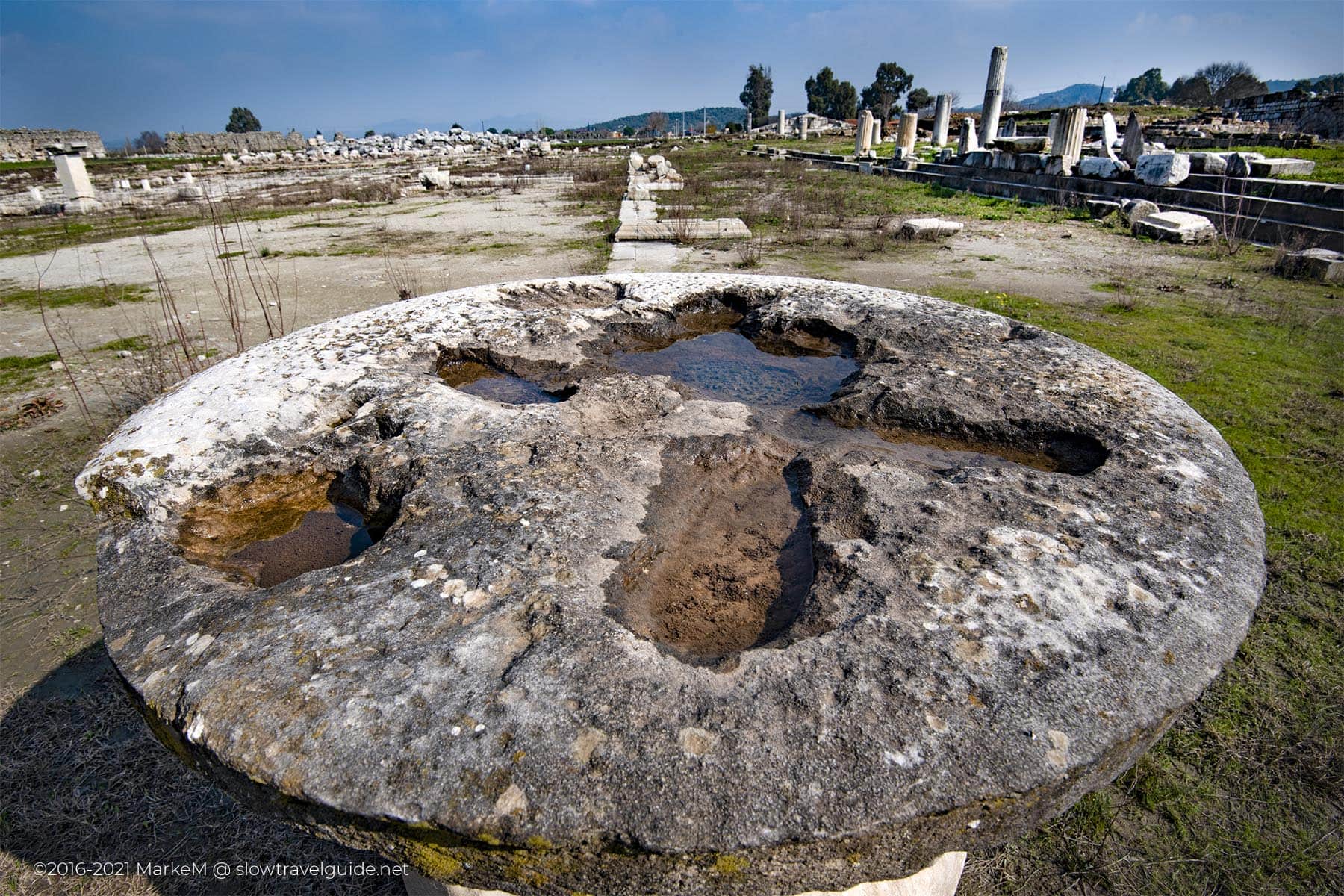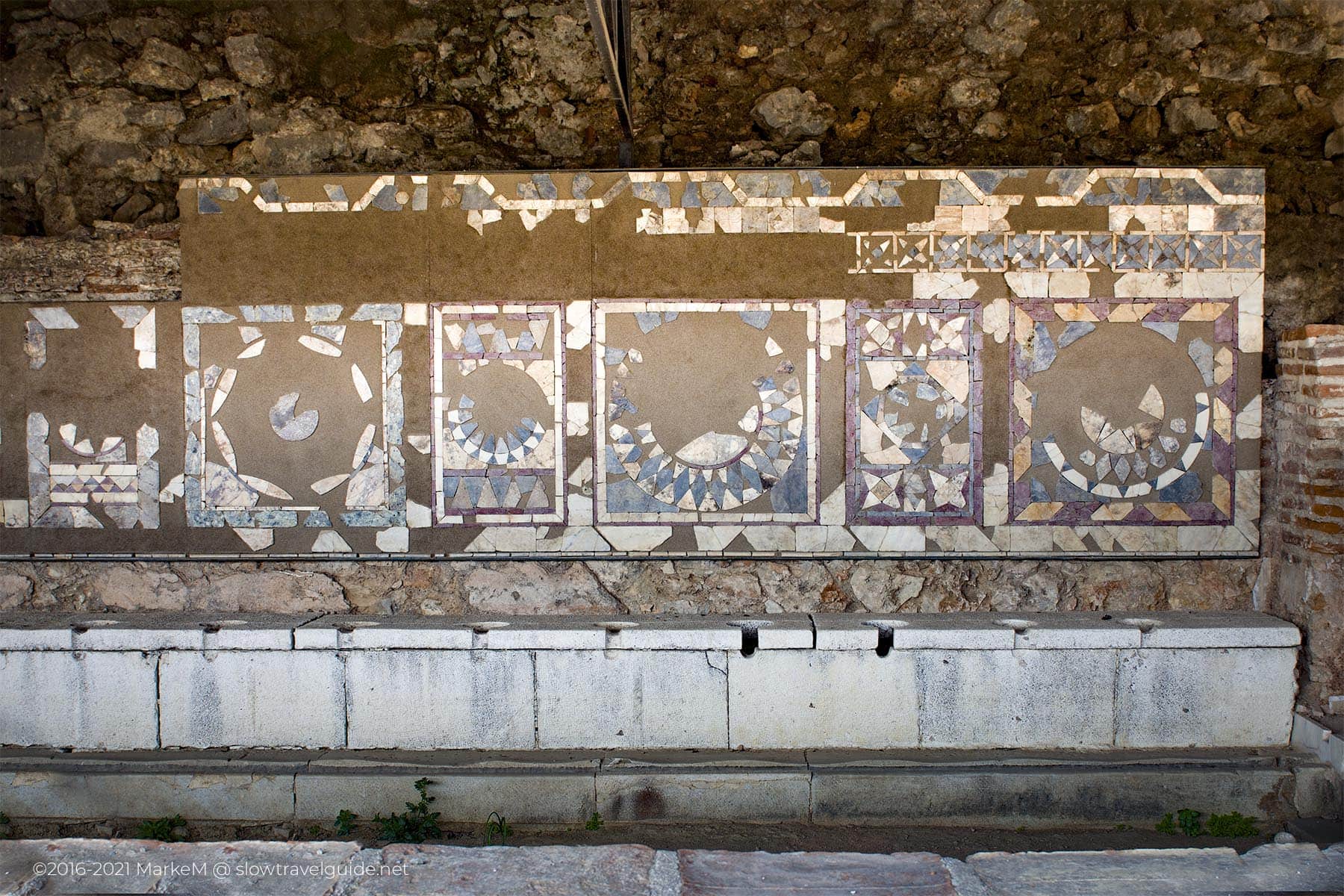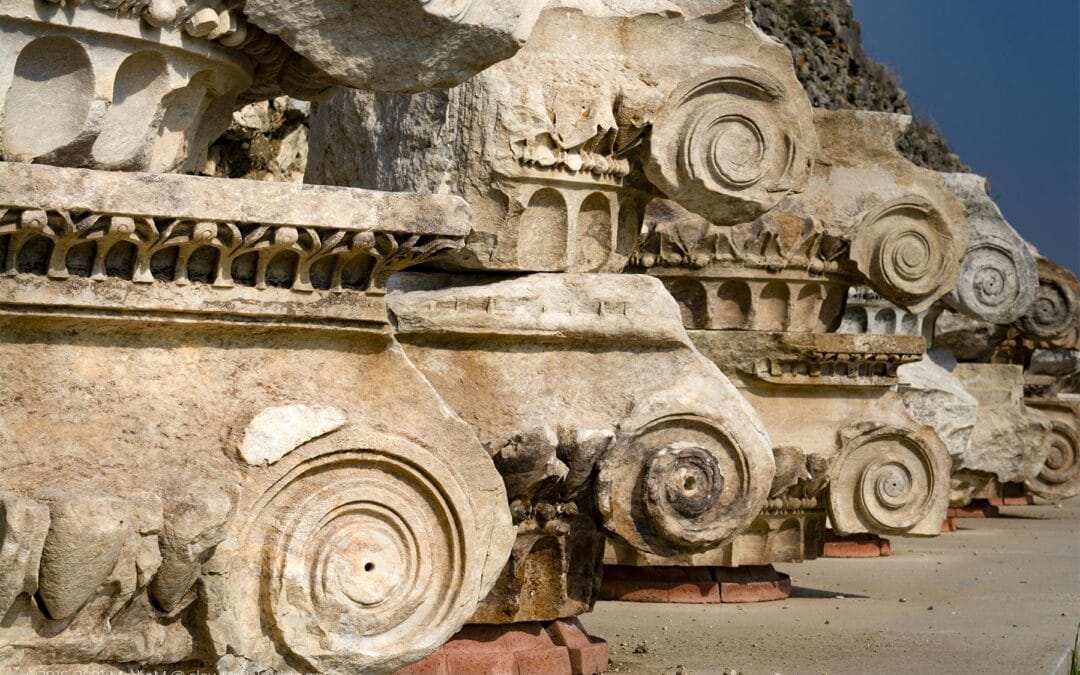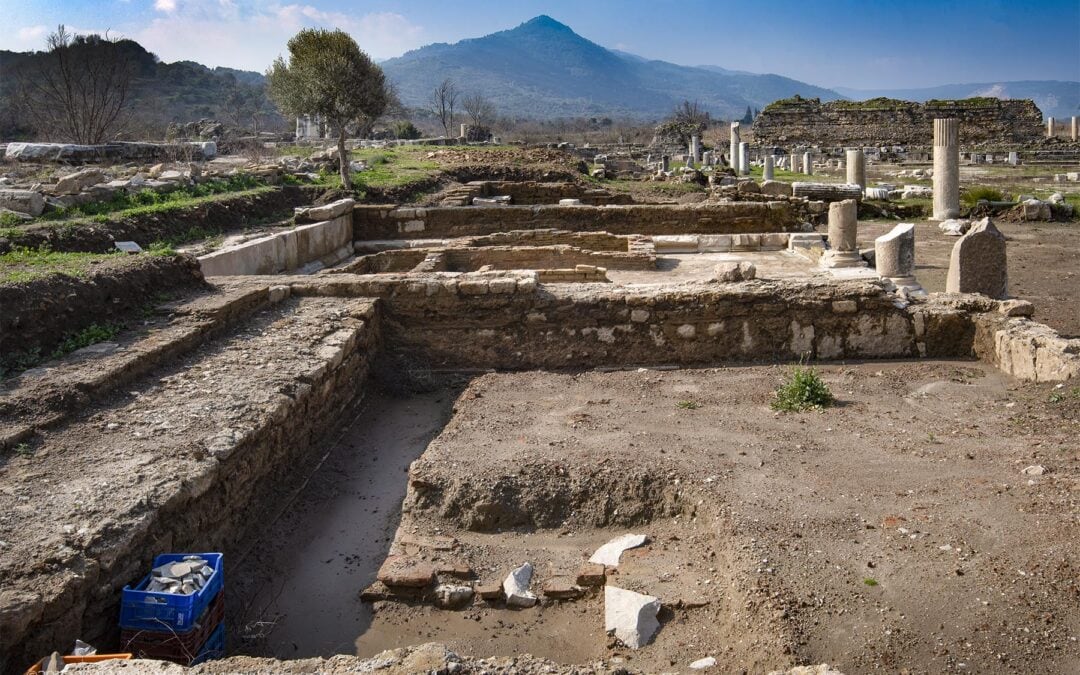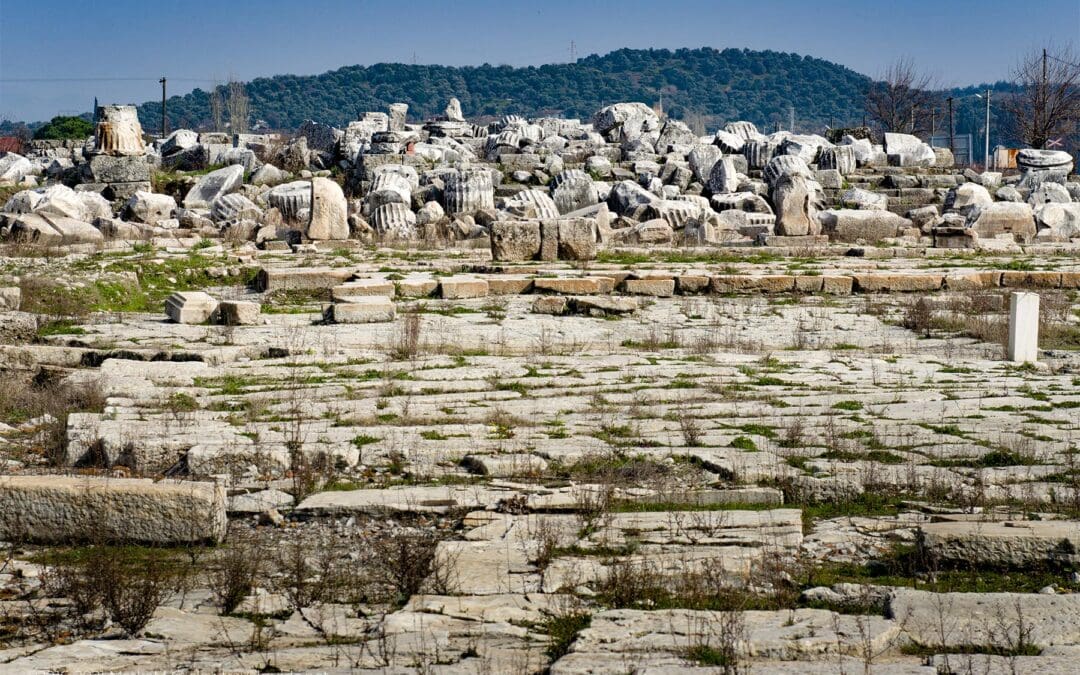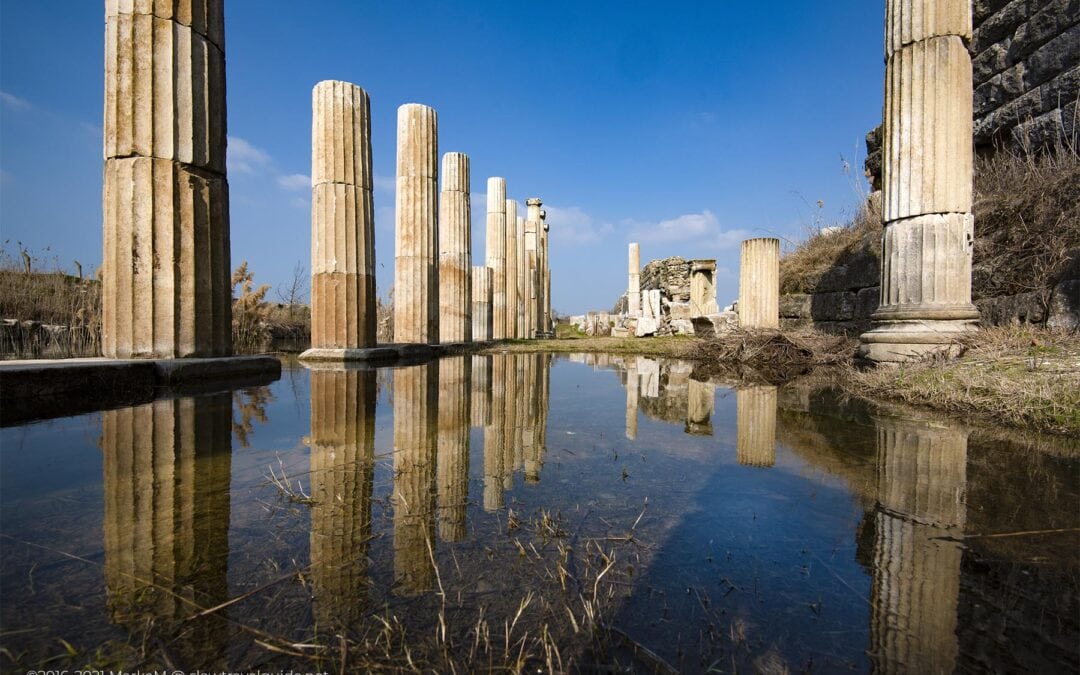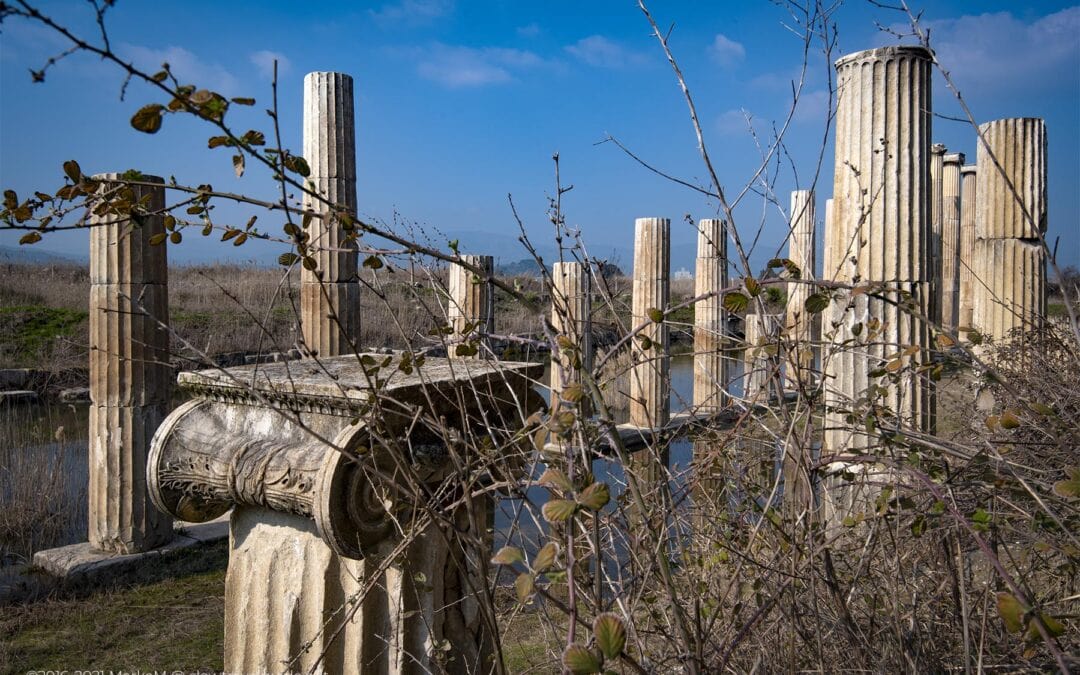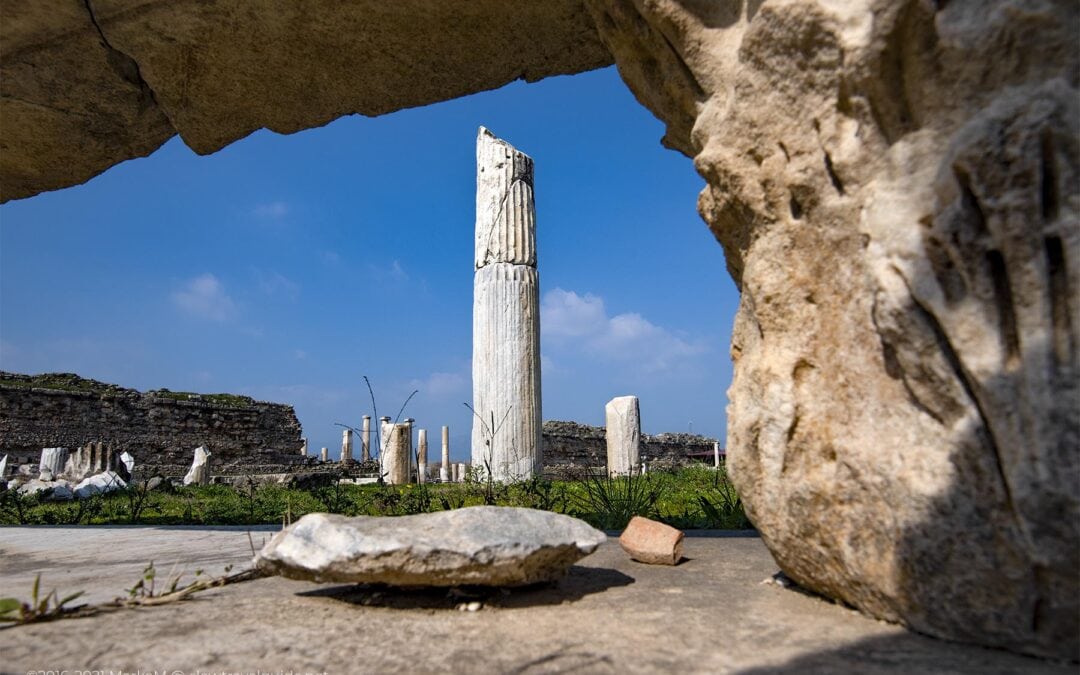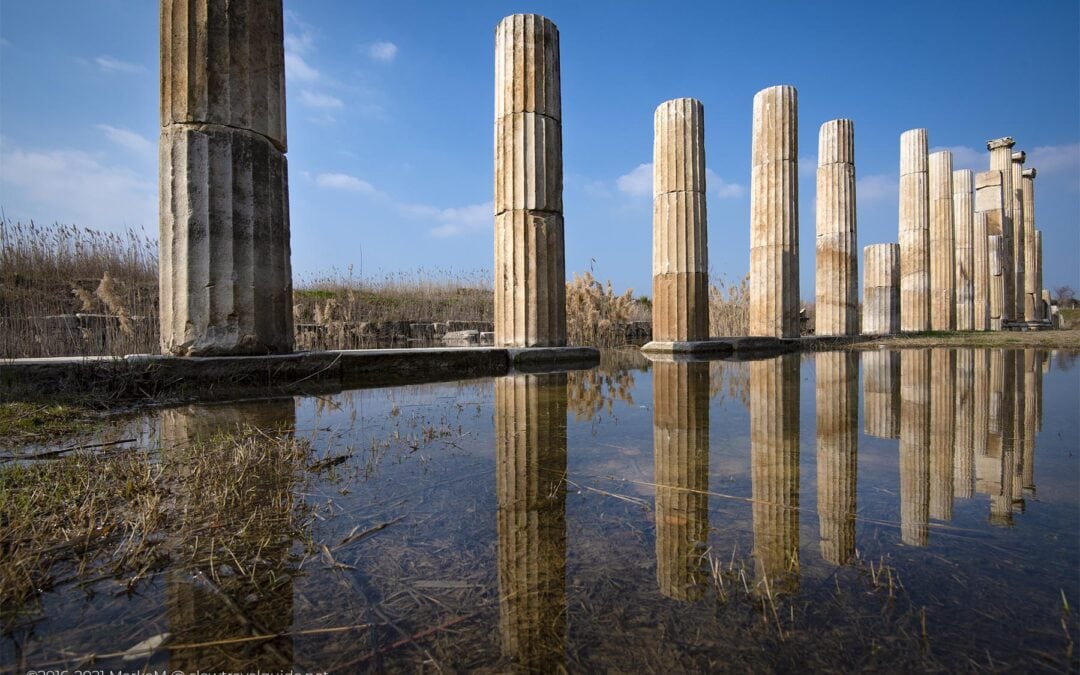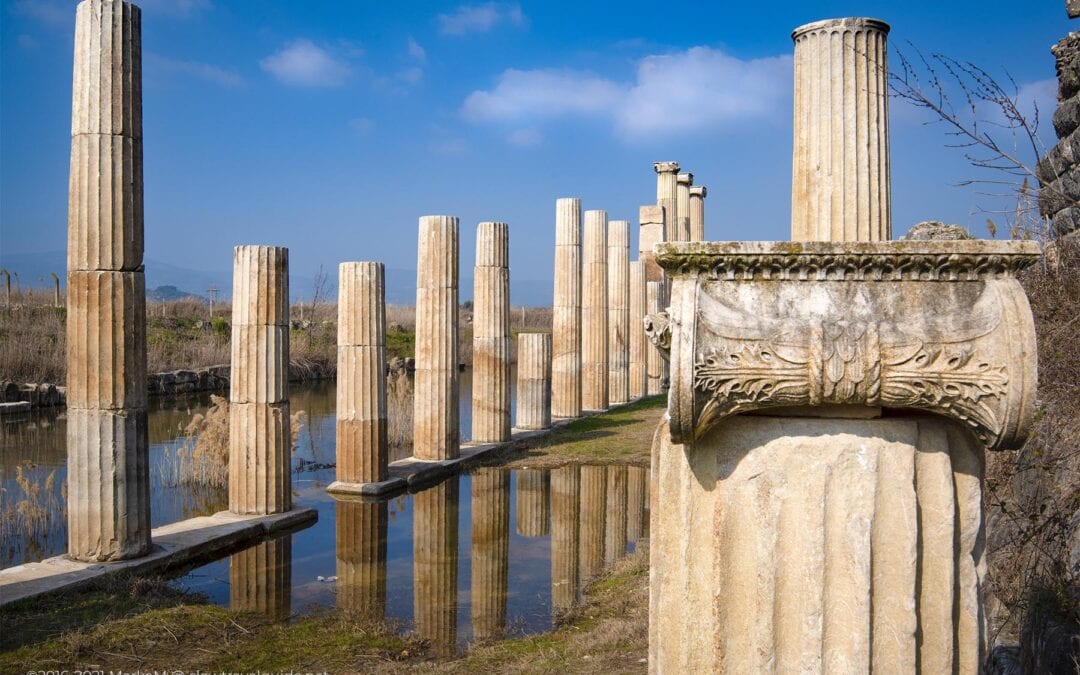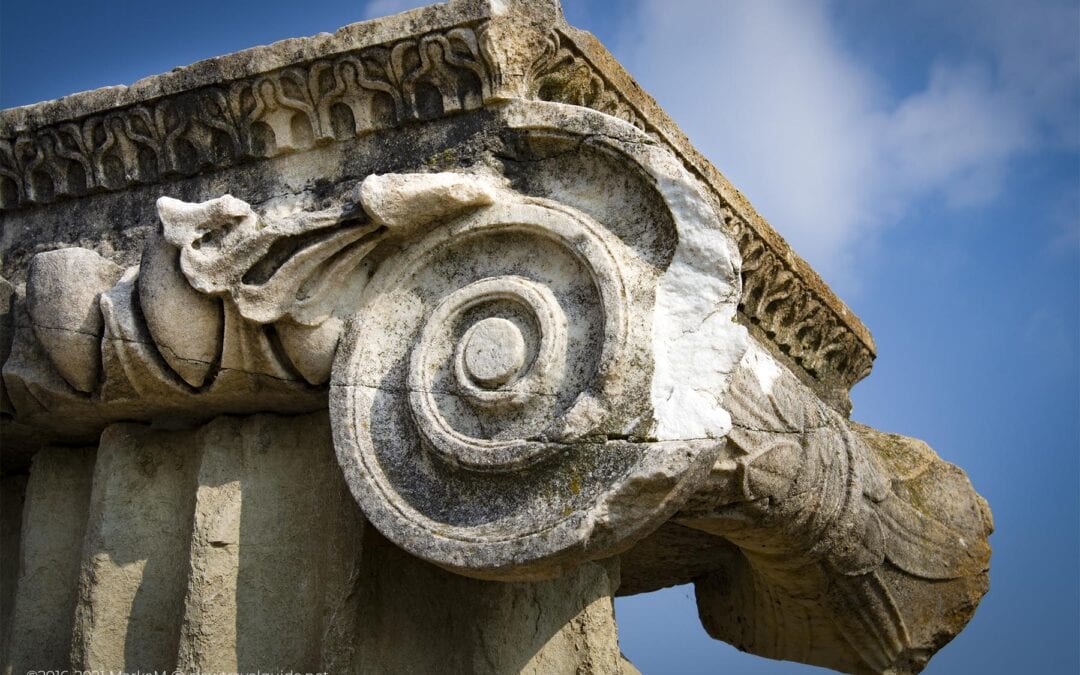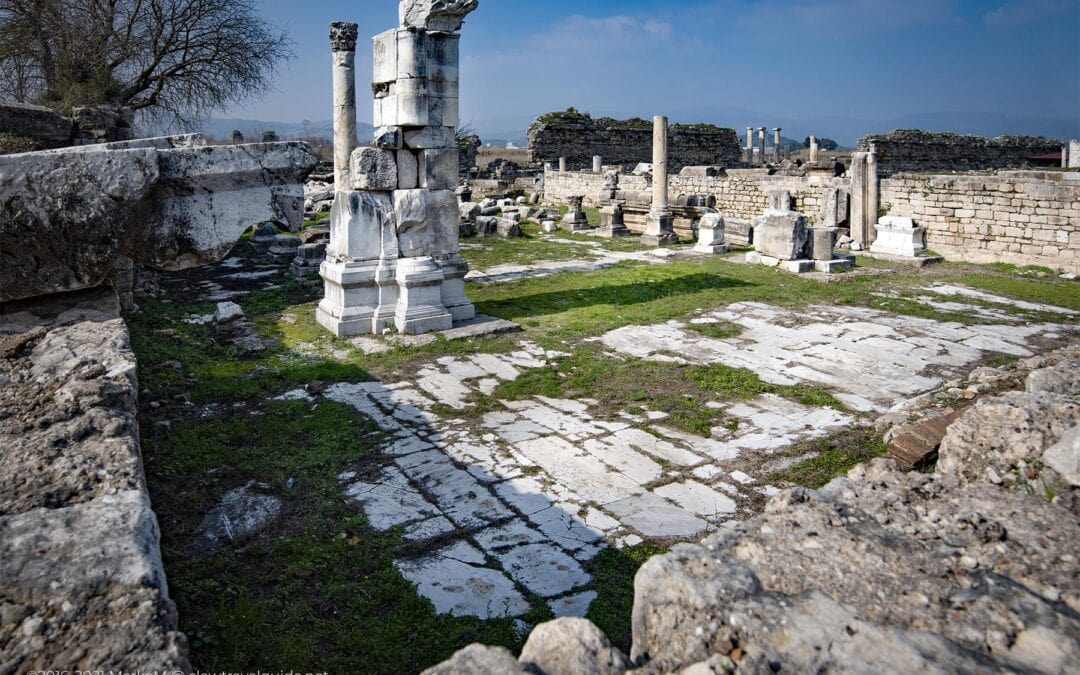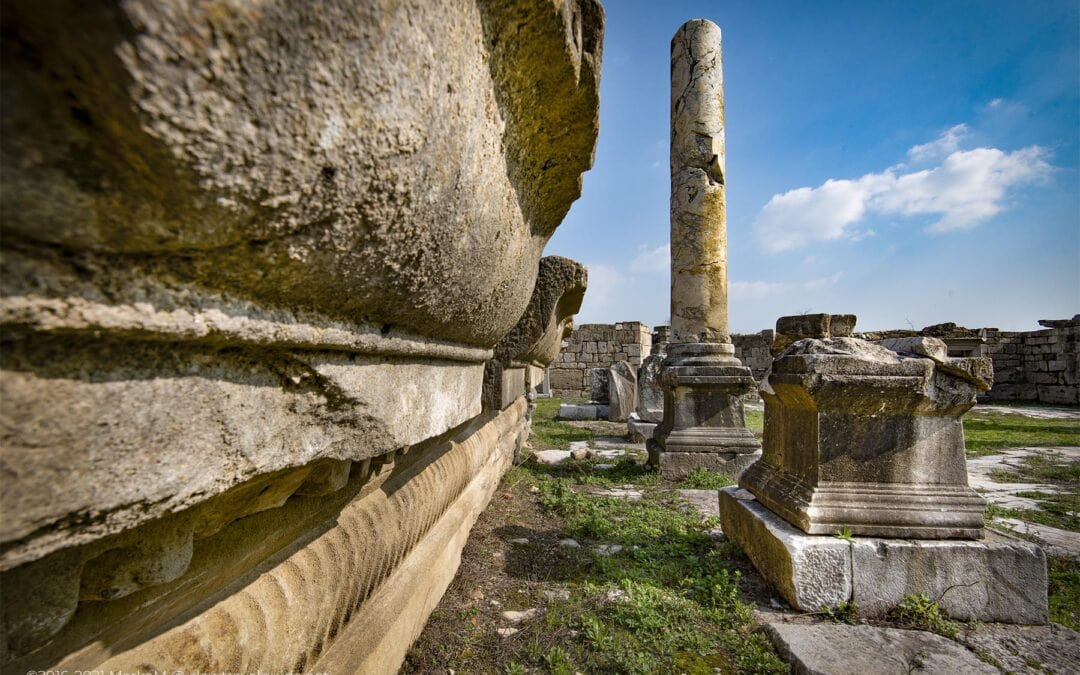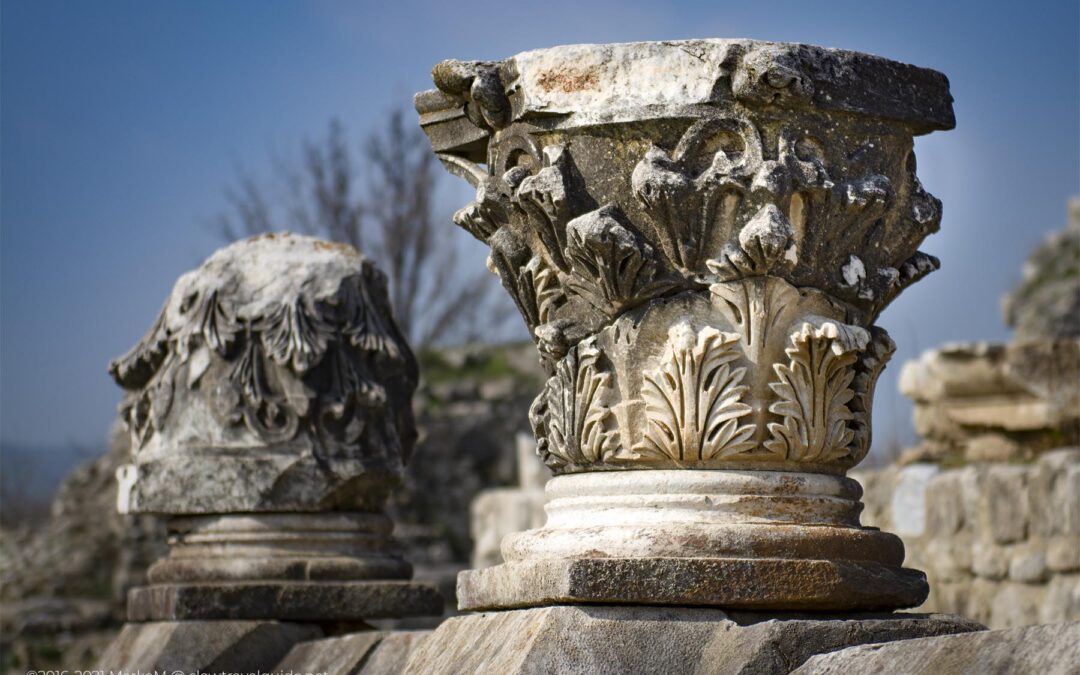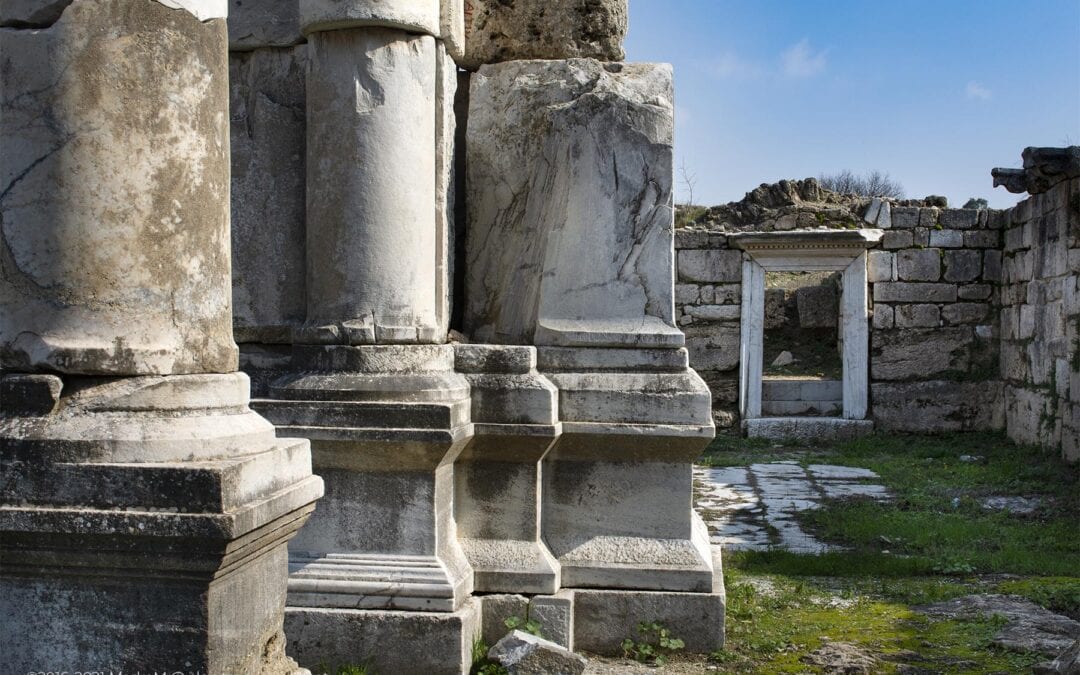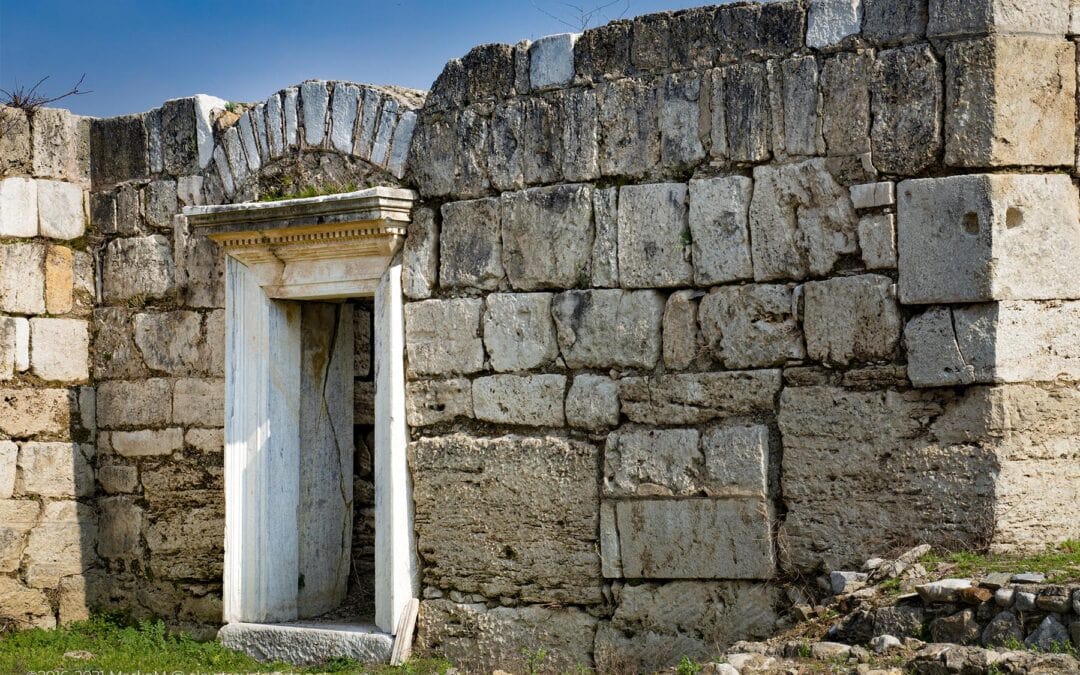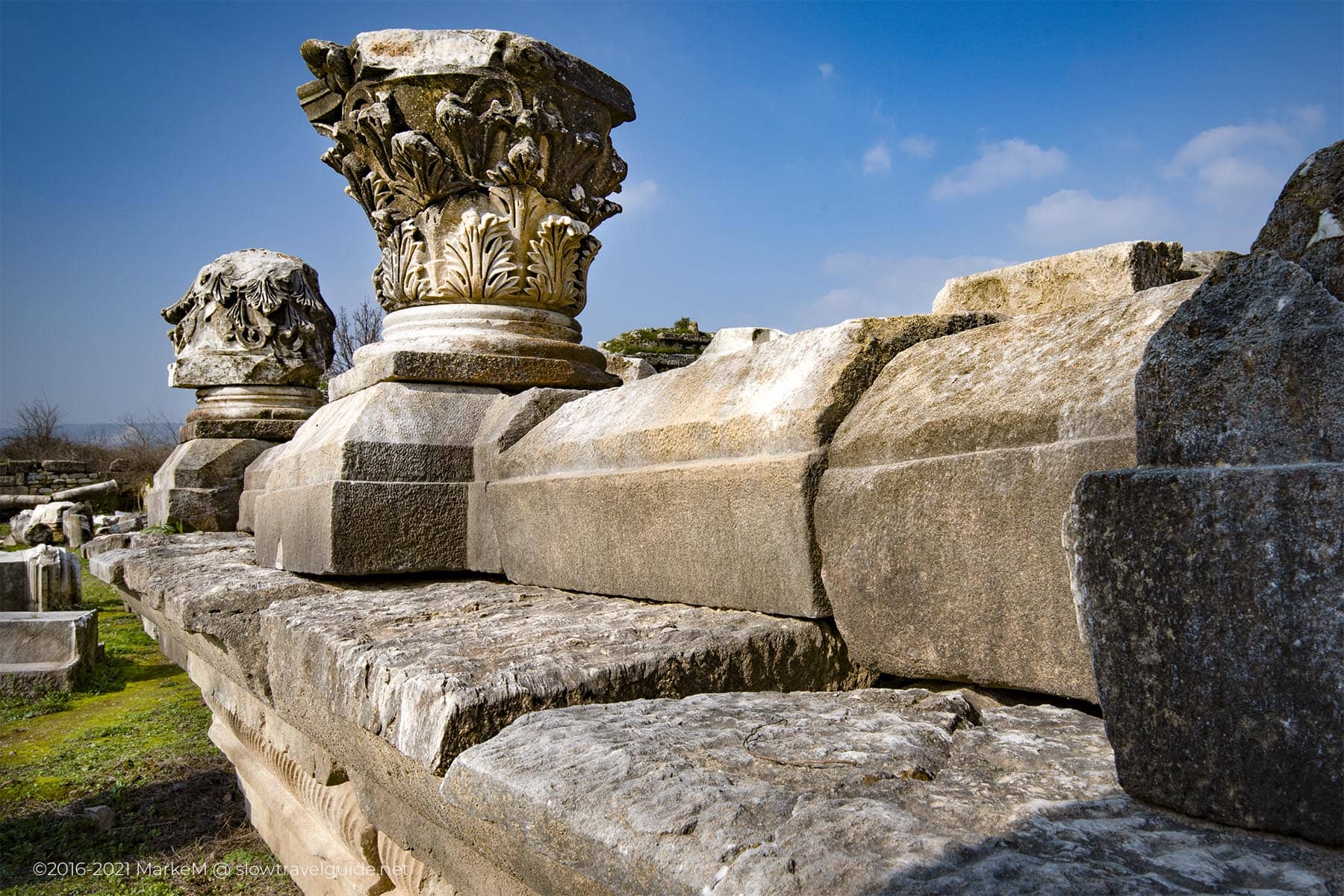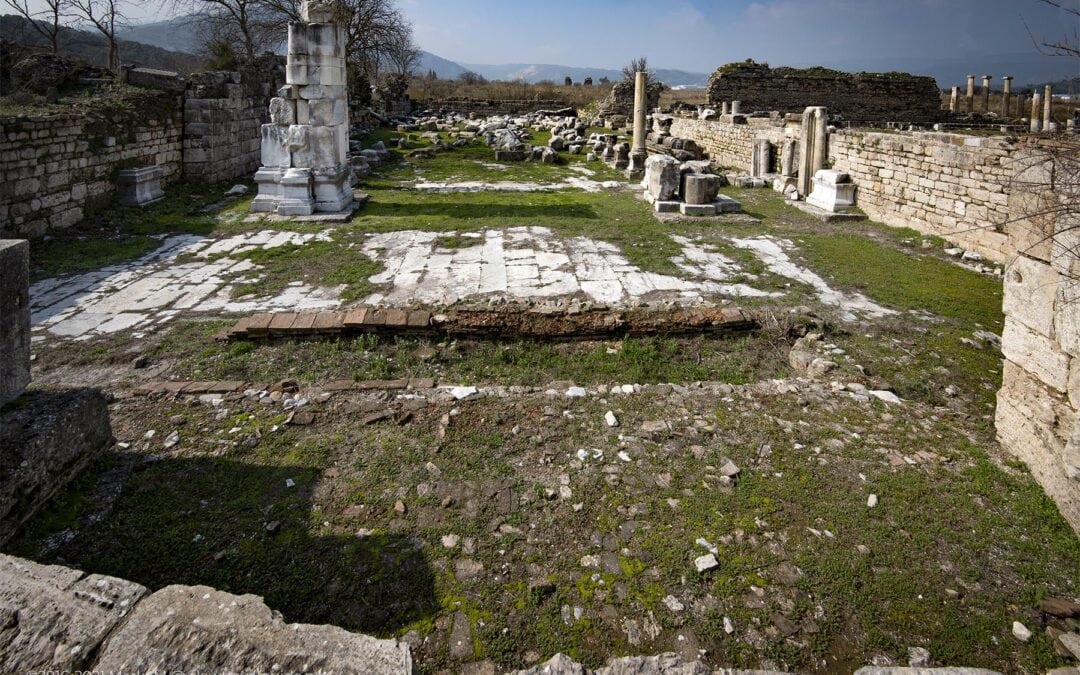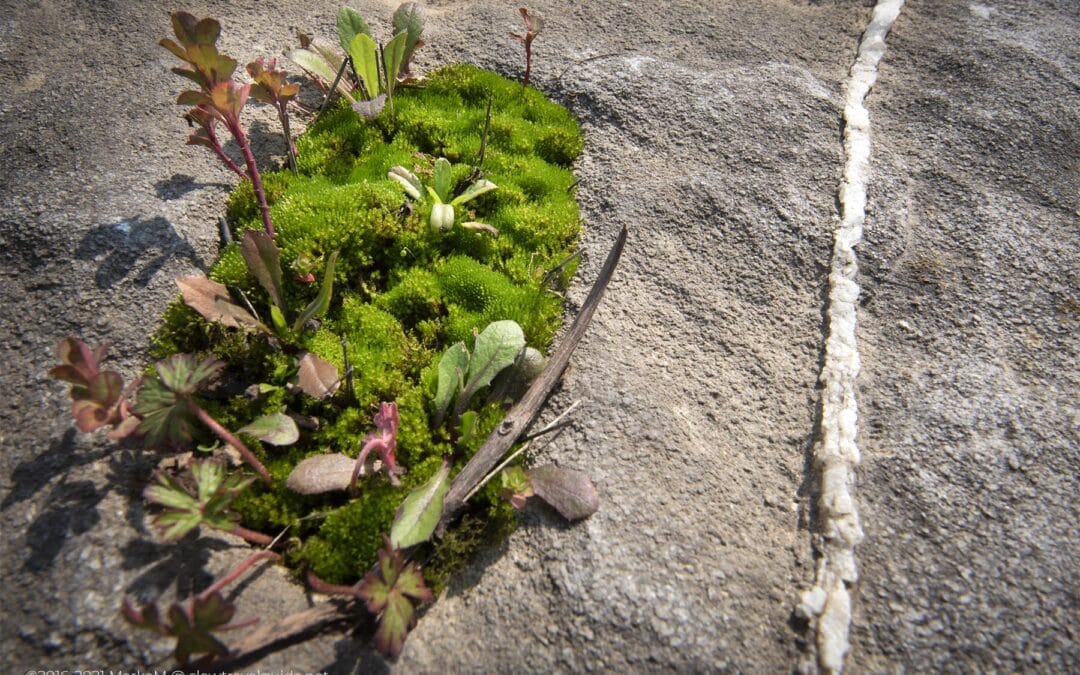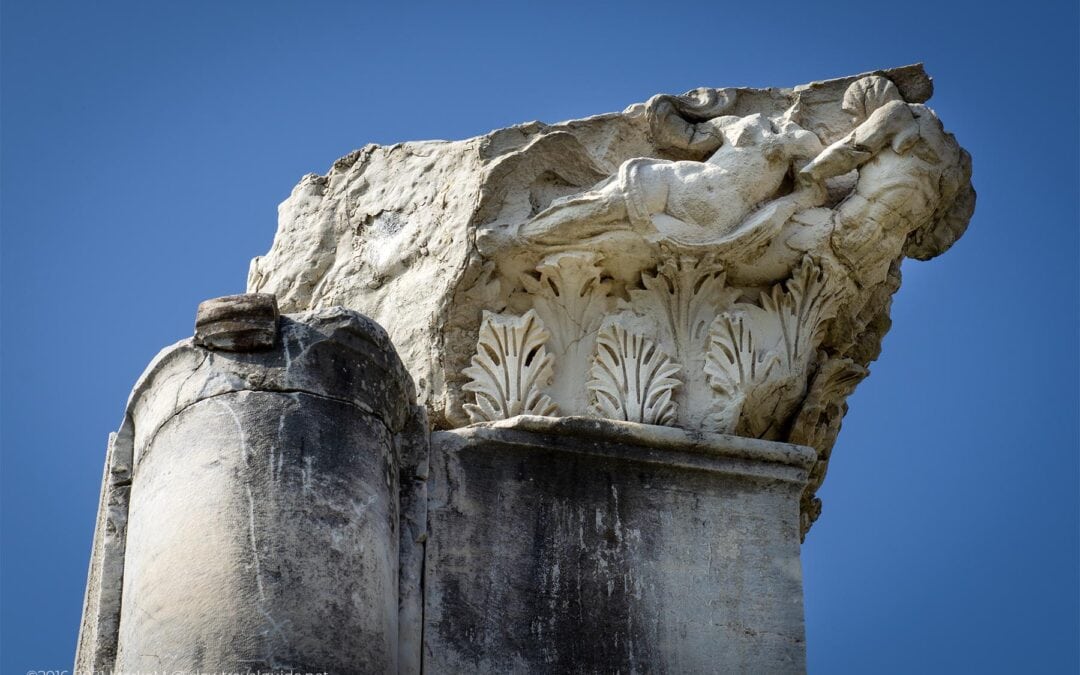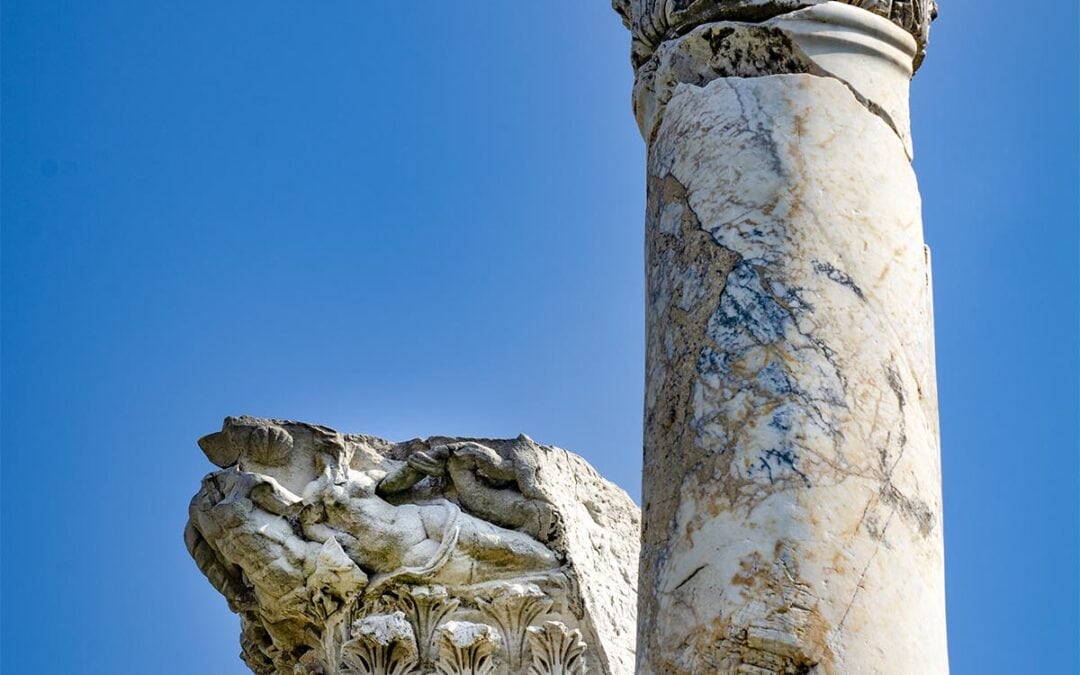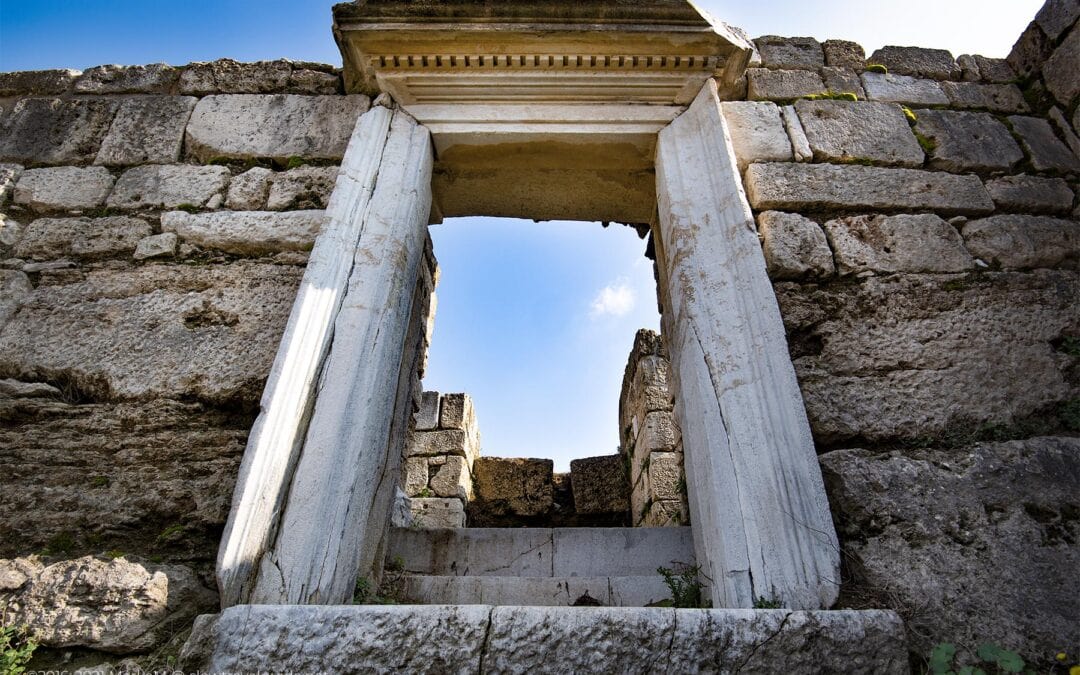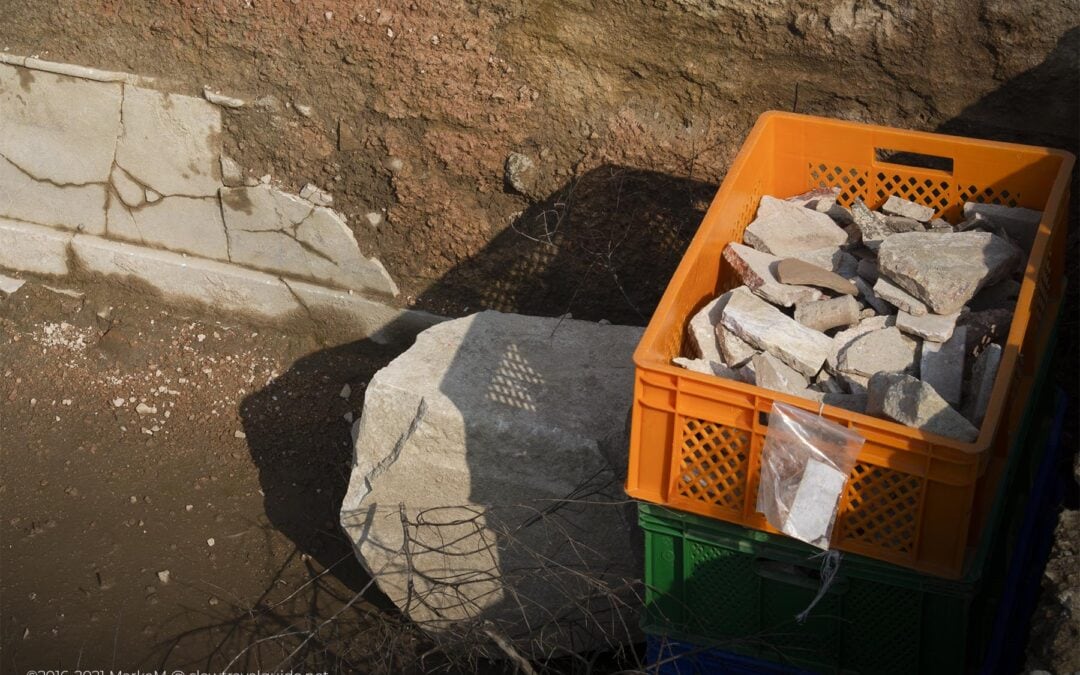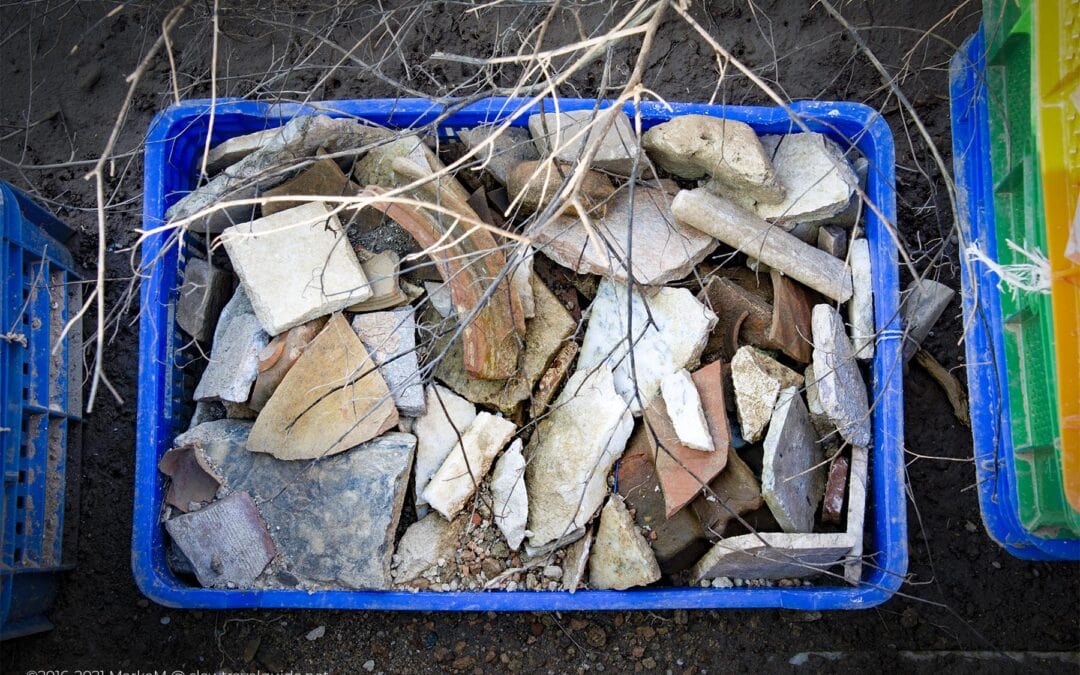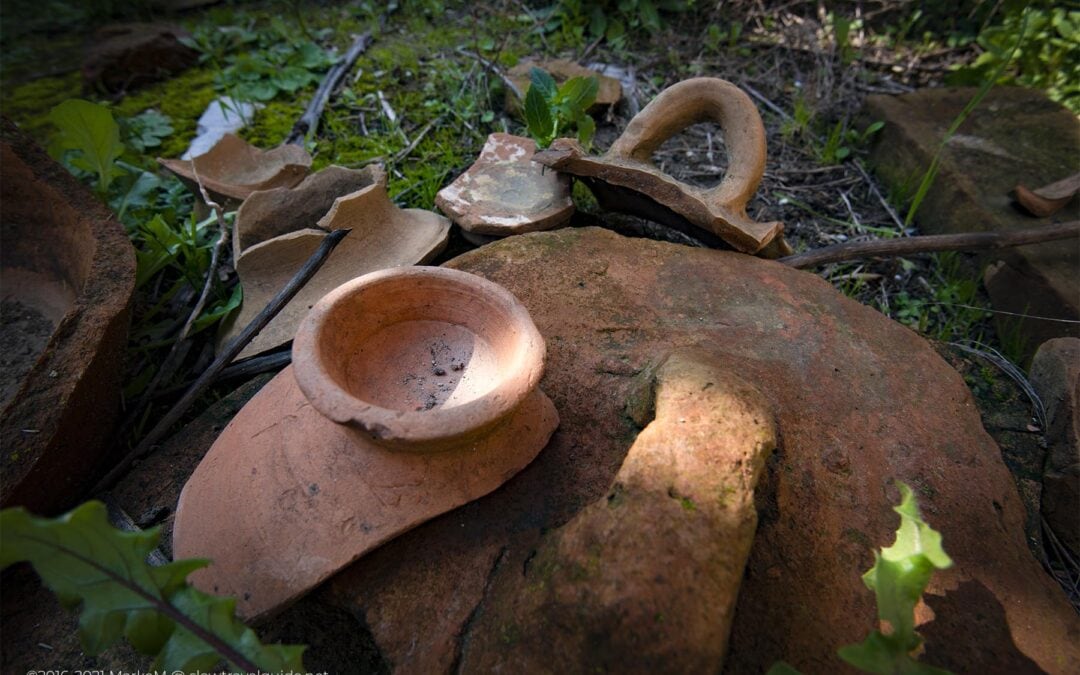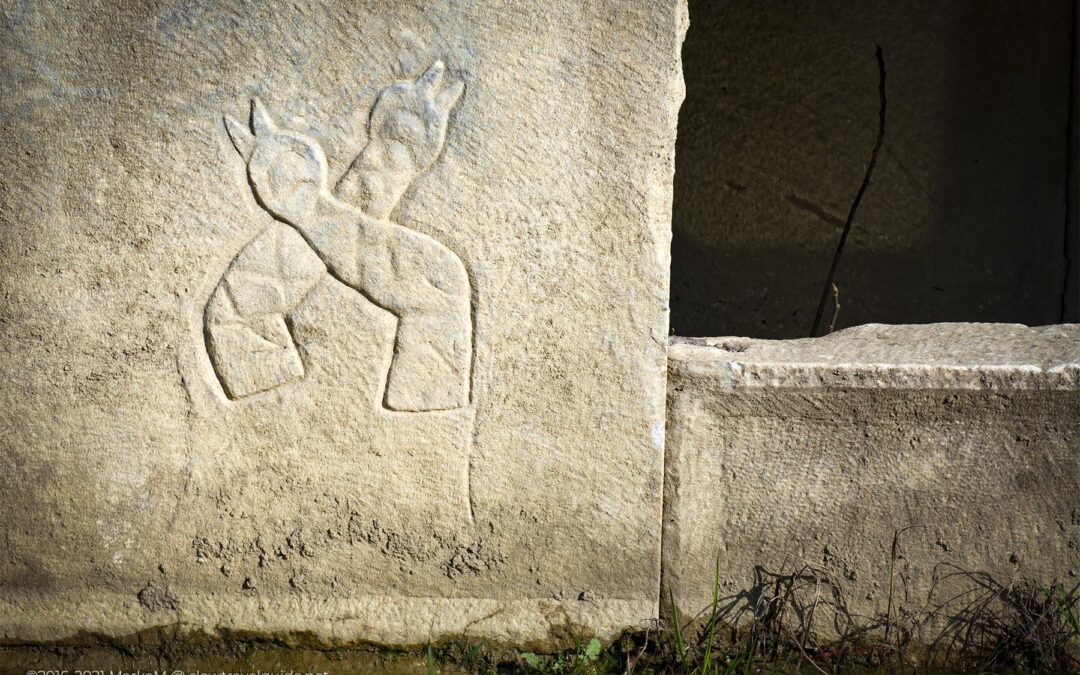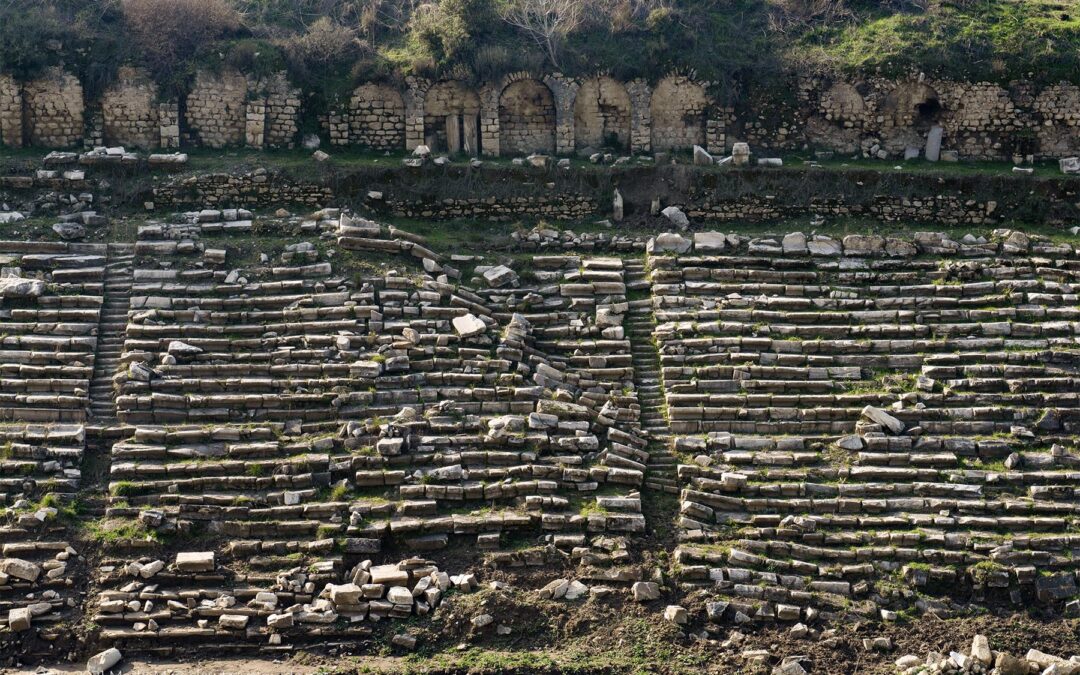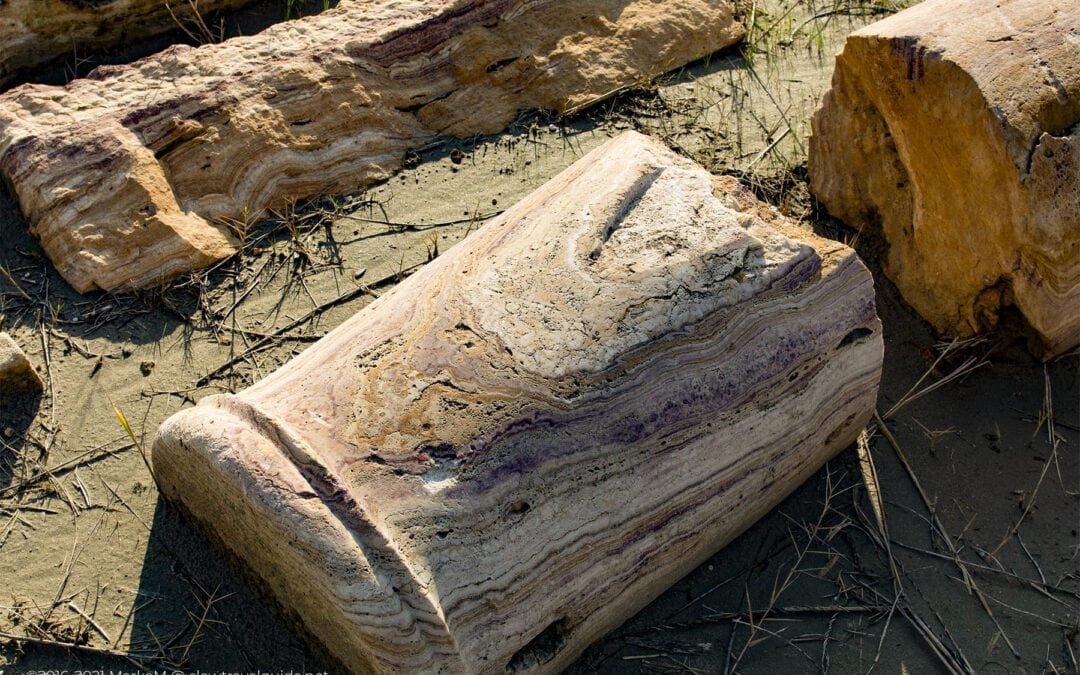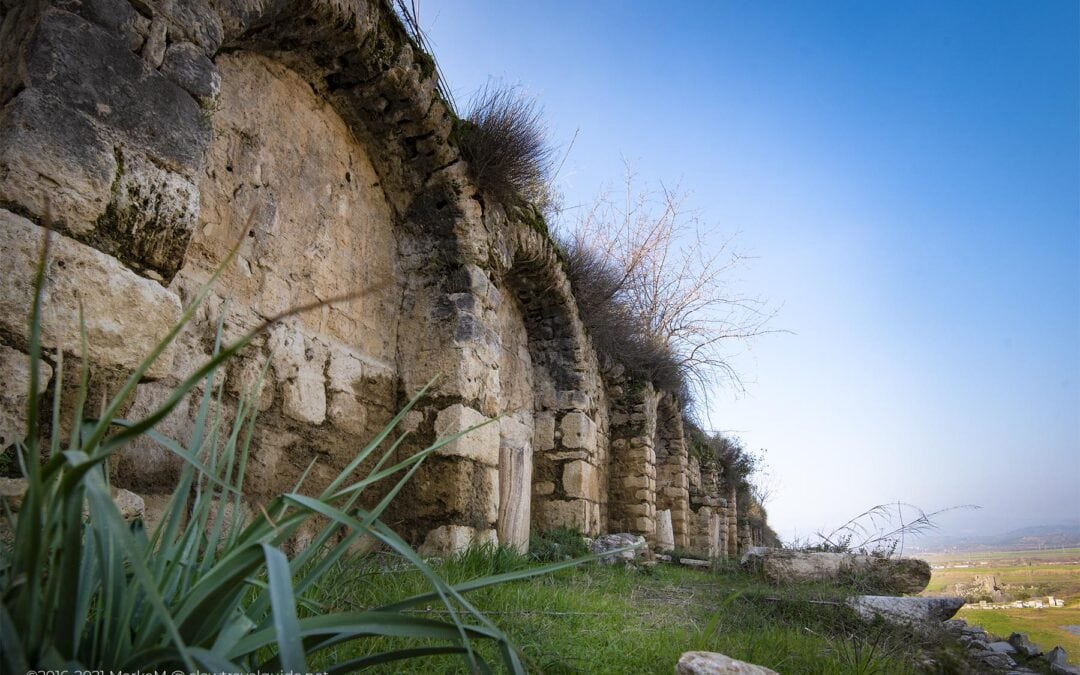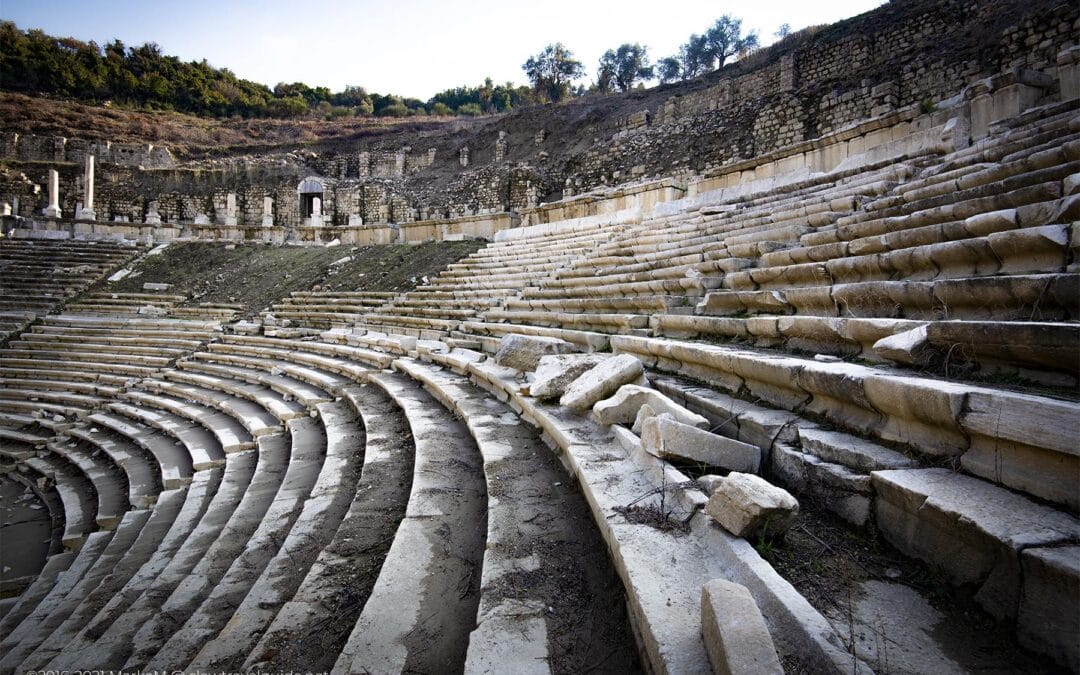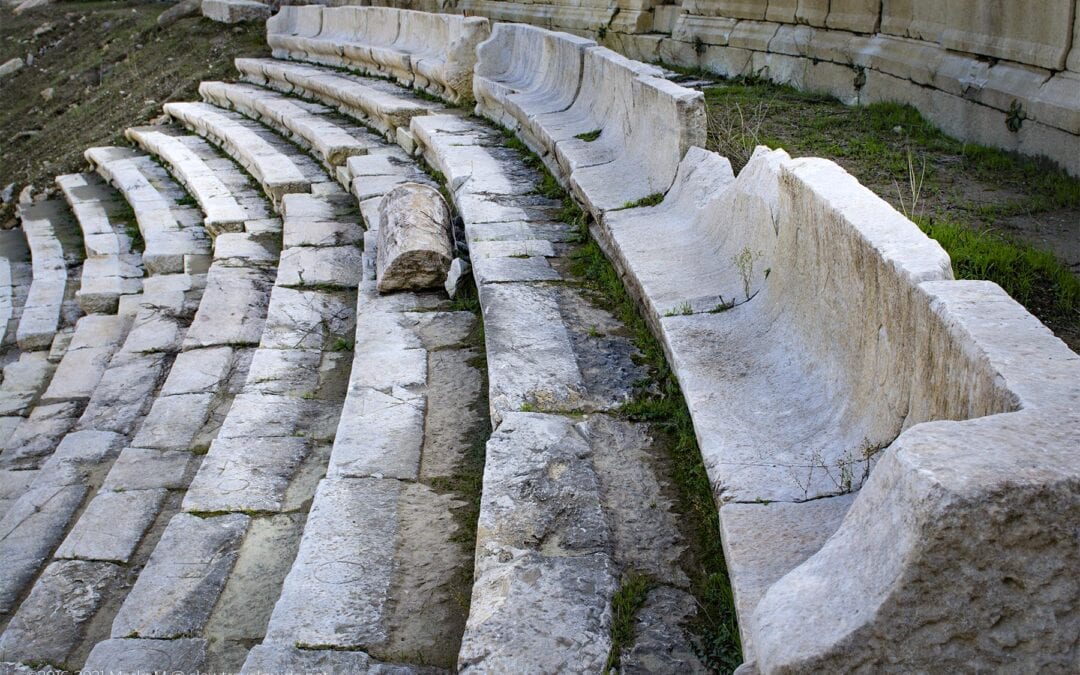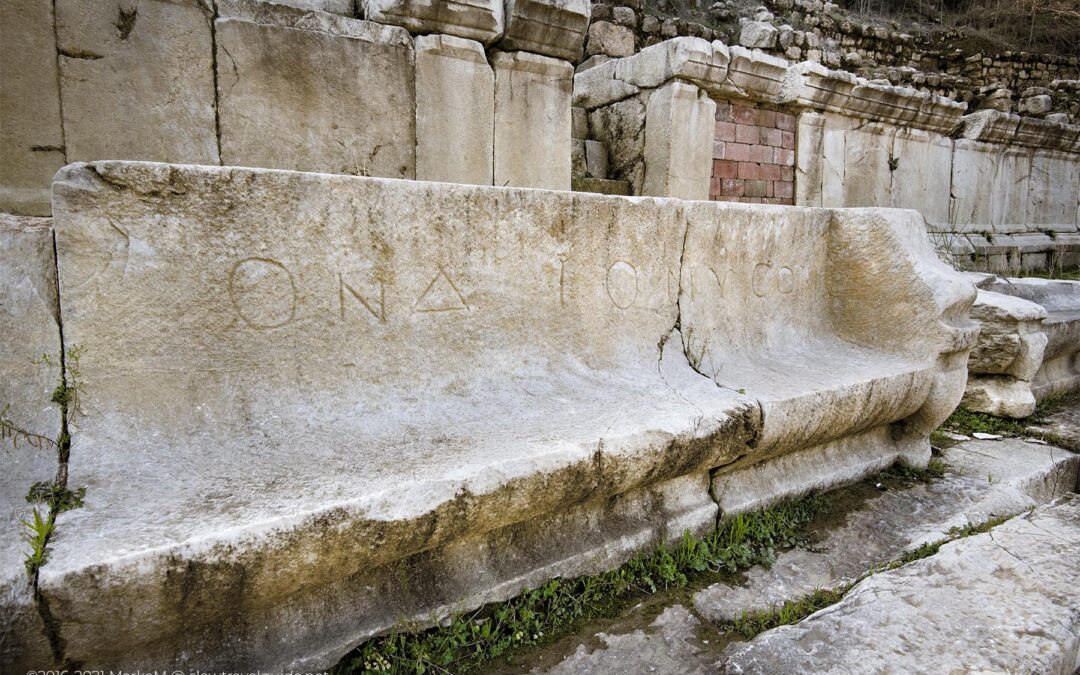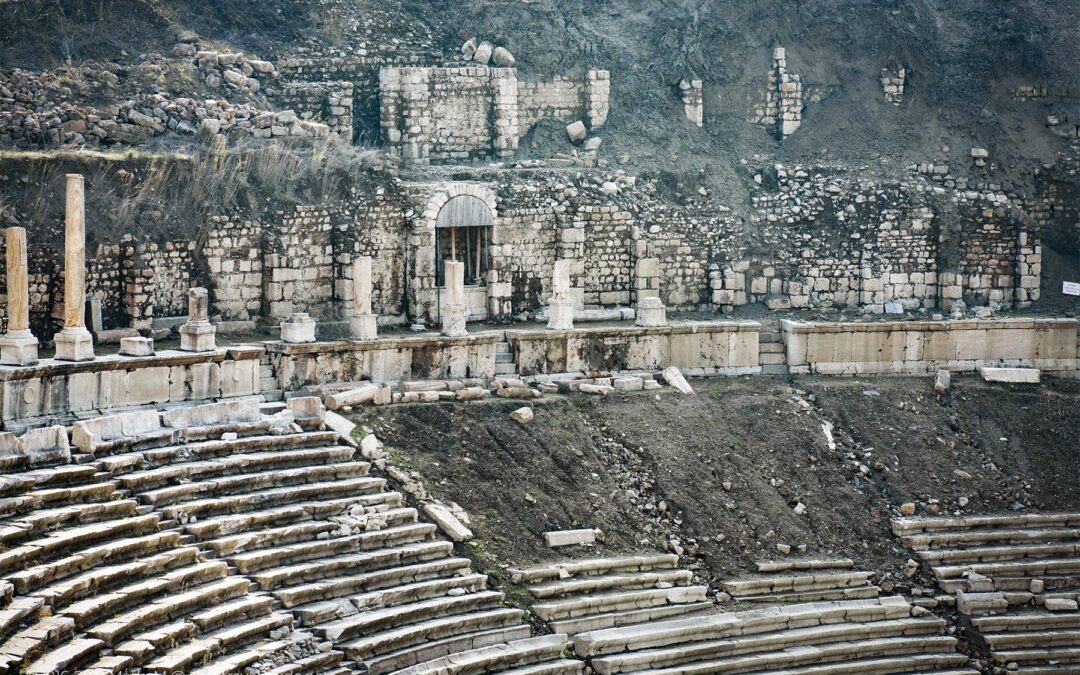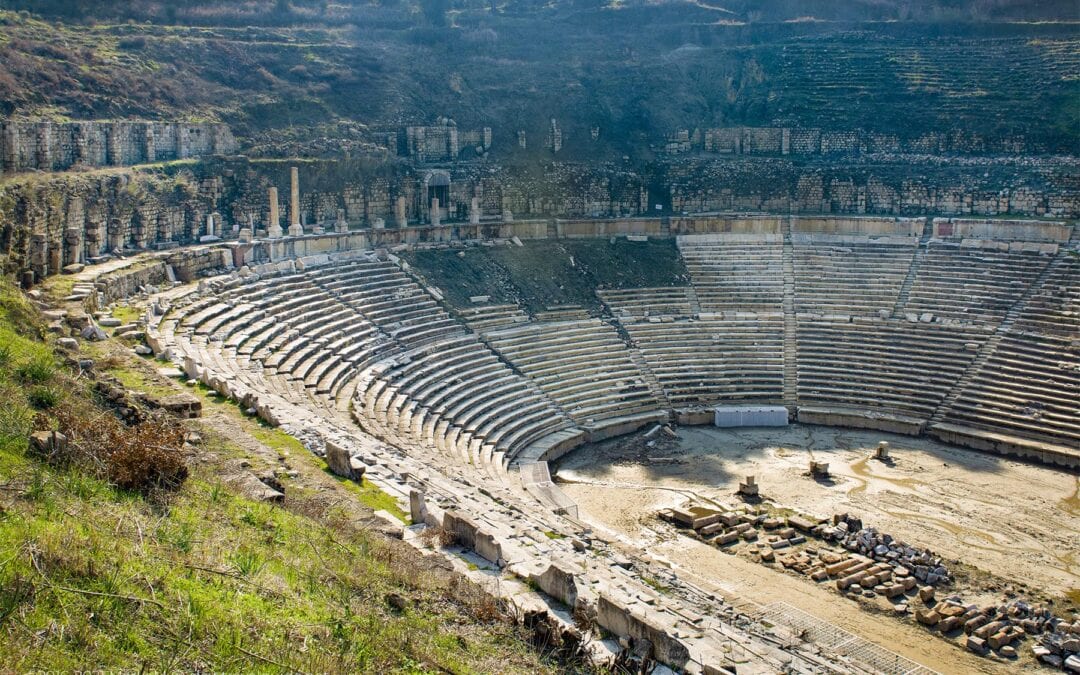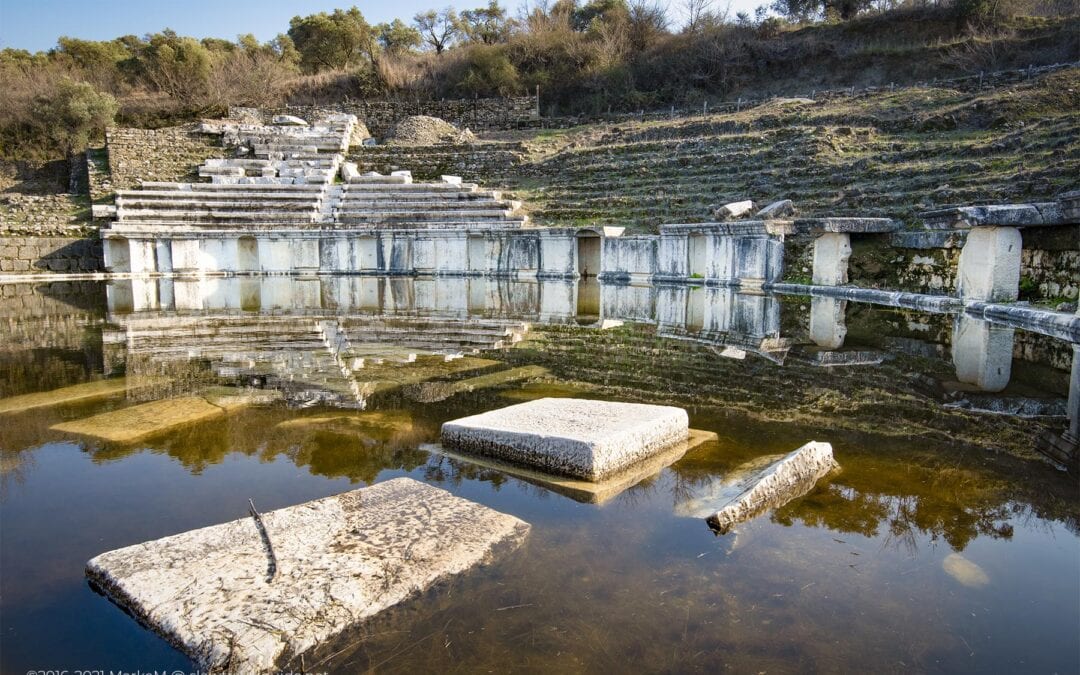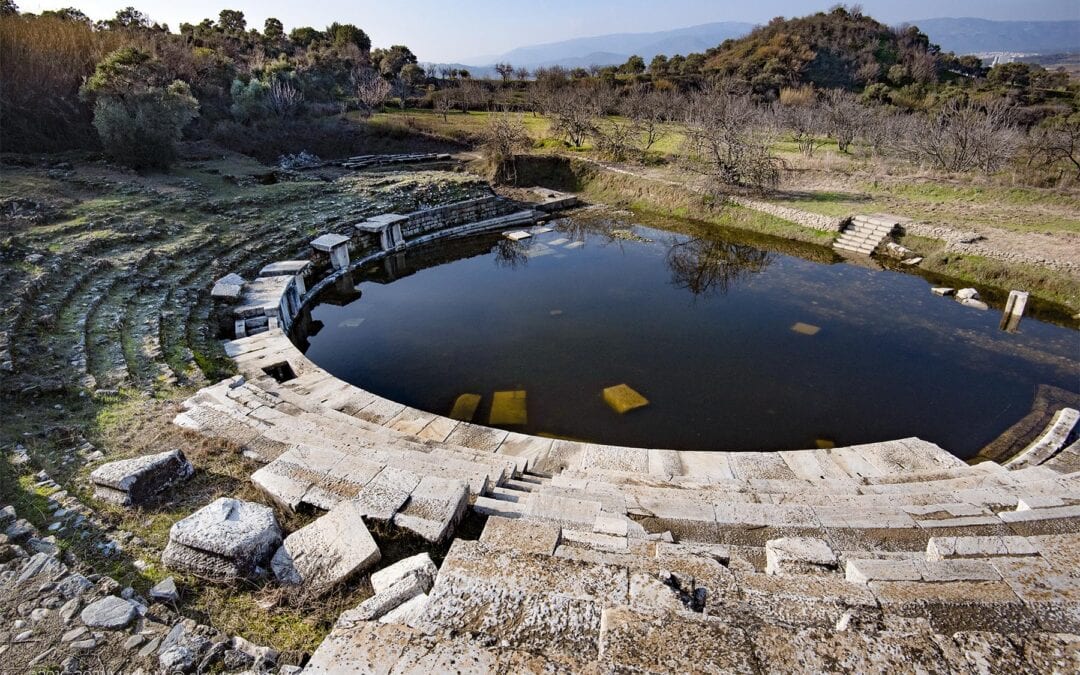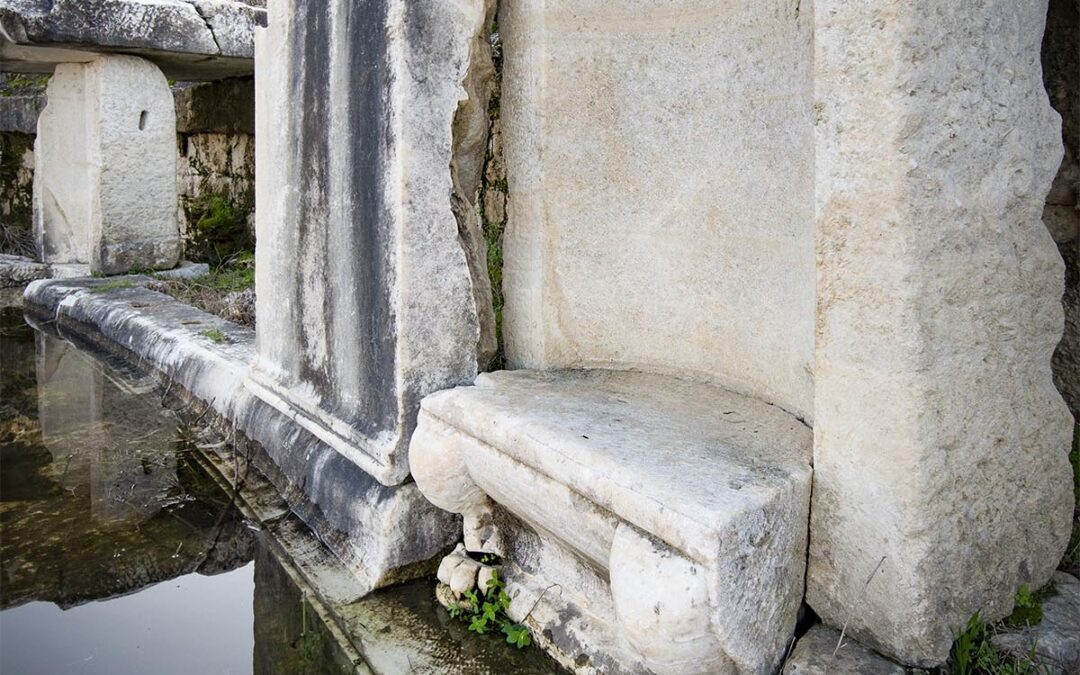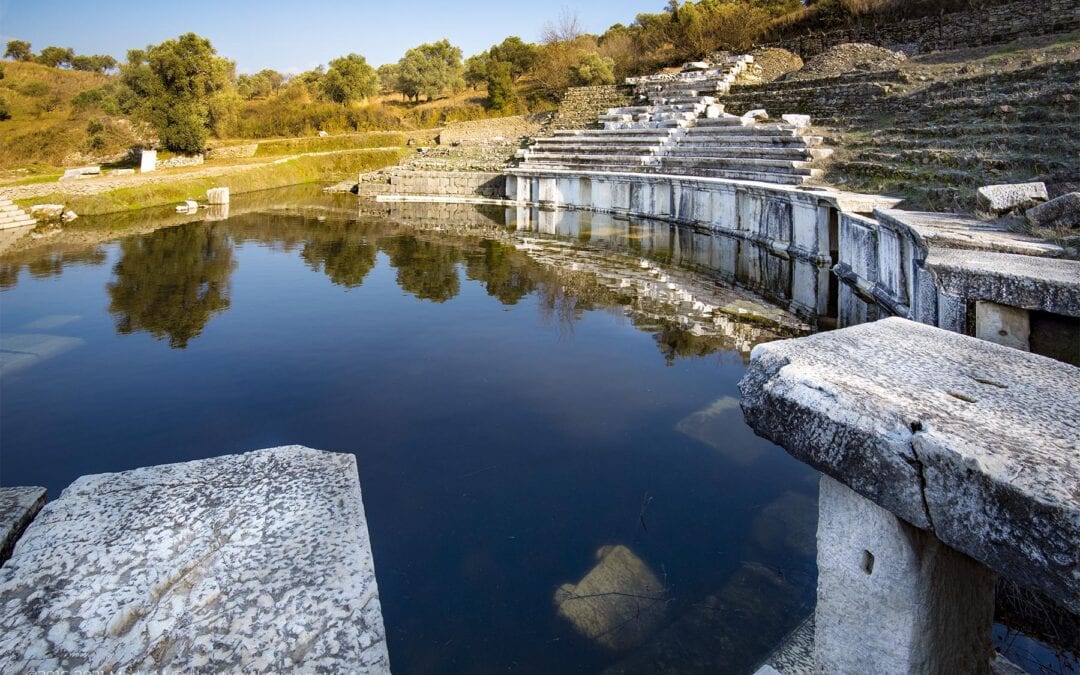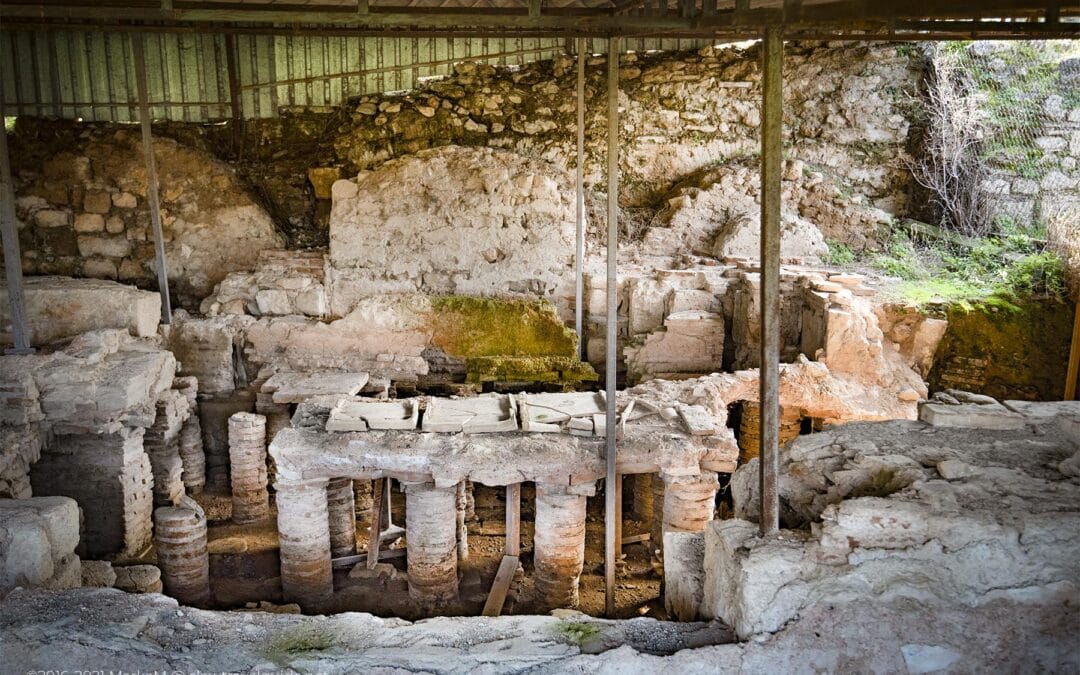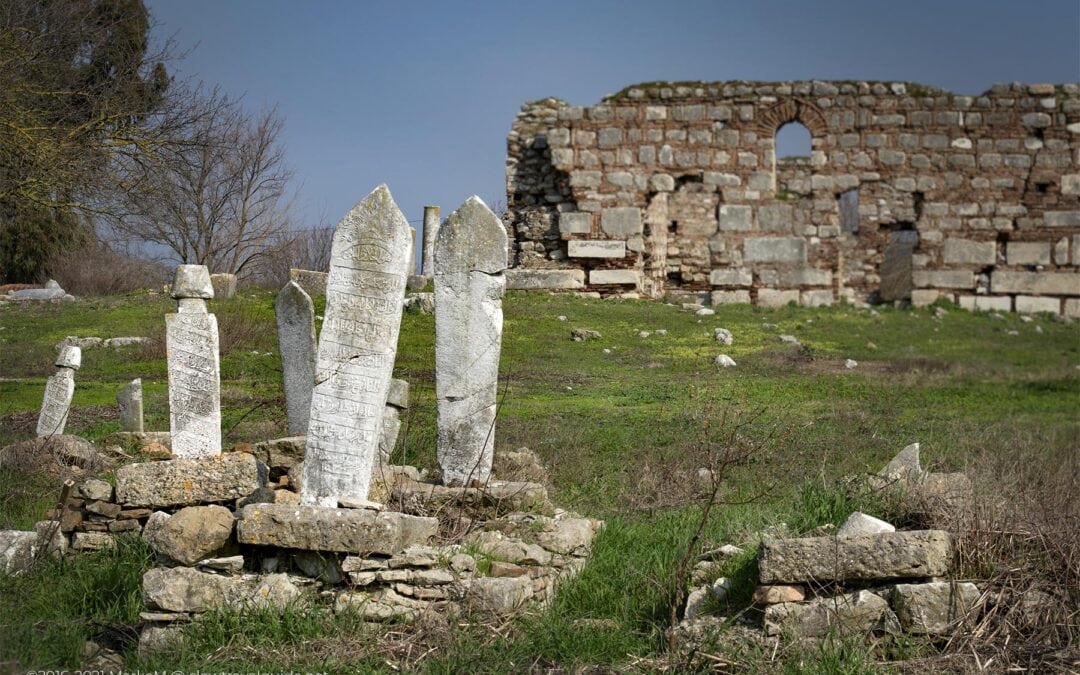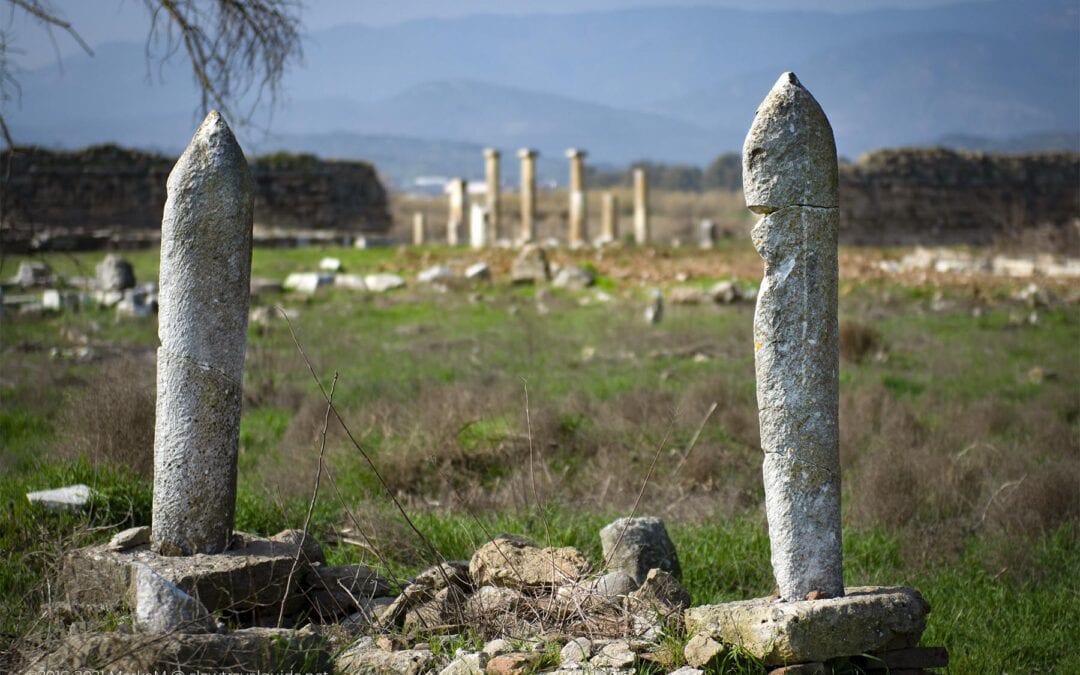Magnesia
An Excavation Project In Progress
By Slowtravelguide
Somewhere between Ephesus, Tralles, and Priene, you will find Magnesia. If you don’t mind that this is an ongoing excavation project, and this ancient site is enormous and a great place to explore.
Don’t expect to find many information boards or signs to give you more information.
It is indeed likely that the site has a very decent combination of restored parts and natural elements.
Magnesia is ideal for those who want to see something beyond the typical sites on everyone’s list. Or those who have already ticked many places off their Turkish bucket list. Keep the Magnesia map at the bottom of this article as a reference point during your visit.
Magnesia On The Meander
Magnesia is a former Ionian Greek city named after a Magnetes; its first settlers came from the Magnesia region of Thessaly in Greece. The city has an excellent geographical location and a reasonably large scale. Its original name Magnesia was changed to Magnesia on Maeander to prevent confusion with Magnesia ad Sipylum in Izmir.
Judging by what Wikipedia has to say, we wouldn’t have minded living there ourselves since the territory around the city is described as being remarkably prolific, producing excellent wine, figs, and cucumbers. Now, anywhere with cucumbers… were sold! ? The town never became part of the Ionian League because the Aeolians of Greece had already settled it. The site is close to the main road connecting Söke and Ortaklar, with only partial fences. Explore the nearby fields to reach the rest of the ruins. Let the adventure begin!
Entering Magnesia Through The Triangular Peak Of Thorax
Temple of Artemis
The main feature of Magnesia is the Temple of Artemis. Today, it’s mostly a substantial marble-floored plaza, a pile of stones and broken columns, but it’s clear that it was once the city centre in its heydays. The triangular peaks and temple gables are reconstructed on the Temple’s south side, the first to be seen when entering the site.
You’ll find the remains of the Altar of Artemis on the west side of the Temple, which is surrounded by stone columns on three sides. At the far end, to the right of the Propylon, the old public latrines are now covered with a metal roof.
Triangular Peak Of Thorax
Impressive Remains Of The Propylon
Propylon Steps
Propylon And Agora
The Propylon, or Ceremonial gate, rises on a platform of two marble steps and features a series of Ionic columns. It connects the Temple of Artemis with the bazaar, which was turned into a swimming pool when we visited.
The marble floor of Agora is visible through the water, and we feel that it brings extra magic and romance to the whole environment. Only a tiny part of the original 26.000 square meter bazaar was unearthed. The rest is still hidden under a 3-meter thick layer of silt. The bazaar is dedicated to sacred ceremonies, and the Temple of Zeus is located in the southern part of the bazaar.
Water Covered Agora With Reeds
View Towards The Apse
Market Basilica
If you want to fully understand the structure of the Market Basilica, head to the small hill to the left of Agora. The three-naved two-story cathedral is connected to the Agora and is used as a covered market.
Some stigmas represent the sea monster Scylla. The head seen at the scene is a replica. You can find the original work at the Archaeological Museum in Aydın.
Peeping Through A Basilica View
Inside the Basilica, we also found a series of ceramics, apparently from objects that had been excavated.
This is part of the winding Magnesia charm, a work in progress. If you respect this and keep it as it is, walking around a place that genuinely discovers and restores history can be exciting.
The Stadium
To find the stadium, you must leave the part of the ancient site that is fenced off. A small road next to the venue leads to the stadium and theatre.
Both have signposts, so follow their instructions. You will walk (or drive) past the stadium on the way upstairs. Magnesia Stadium is said to be the best-preserved stadium in the world.
Its history can be traced back to the 1st and 2nd Centuries AD; it can accommodate 30.000 spectators in a four-story gallery and has a 189-meter-long track. Its semicircular part has a grand arcade, inscriptions and 129 reliefs on the arena podium.
The most attractive feature of this stadium was probably only discovered in 2012. Yes, that’s right, 2012! If you want to see what it looks like before any digging starts, please check this photo.
Hard To Image This Was All Hidden Until 2012
Theatron Setting
The Theatron
The Theatron in Magnesia on Maeander is in a green environment and can accommodate approximately 4.700 people.
It seems that the construction was never completed, possibly because a landslide occurred before it was completed. Archaeologists don’t know what the function of this place is, hence the name: Theatron, which means a place for spectators. Be sure to check out the back of Theatron, where you can see how it was built.
A Glimpse Of The Theatron
What To Expect
How To Get There: Private or rental car (check the map below).
Nearest Airport: Bodrum Milas Airport.
Parking: Yes.
Terrain: Easy to medium.
Stroller: No.
Income: Yes (Museumpass is valid).
Facilities: No facilities, other than toilets.
Best Time To Visit: All year depending on the weather.
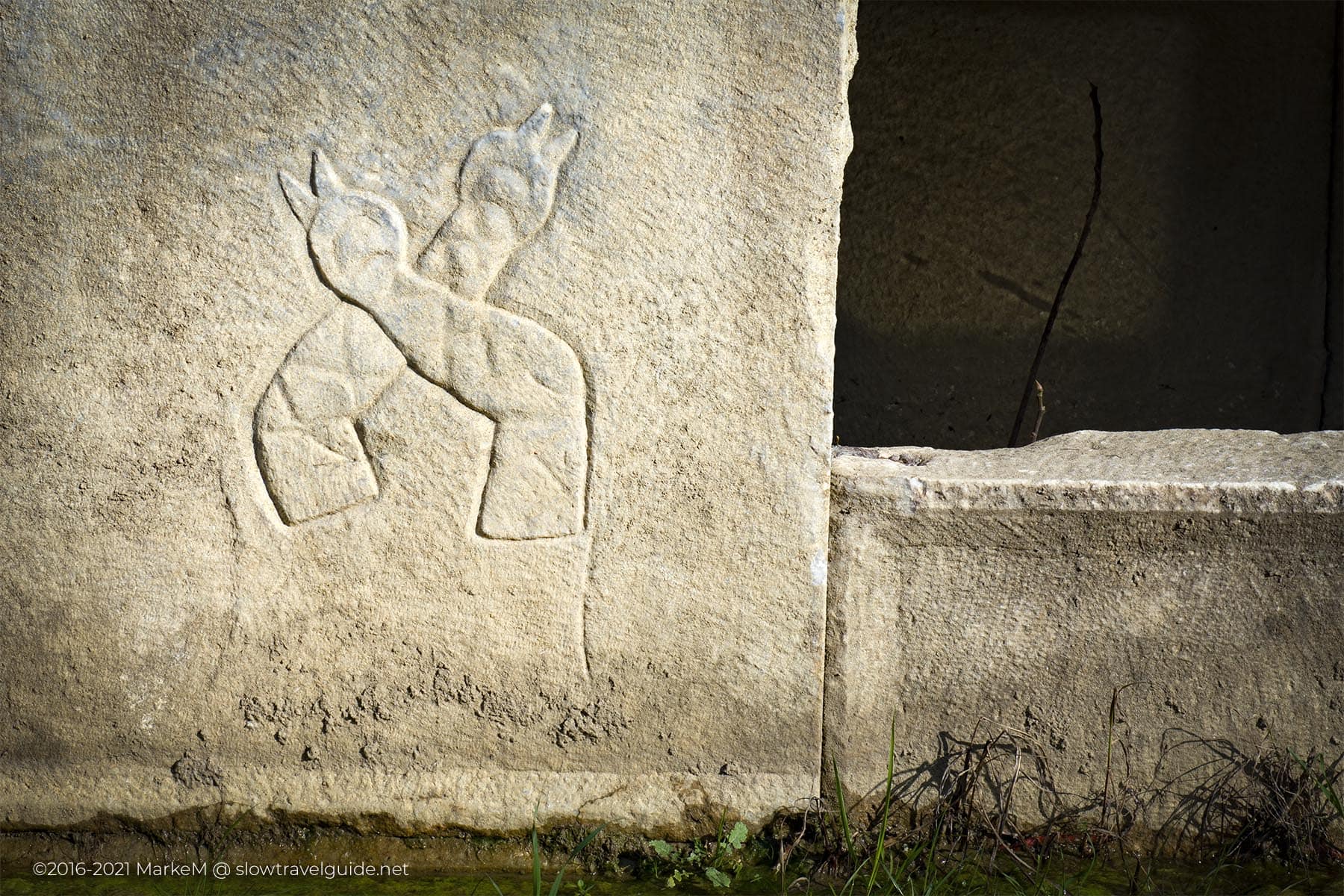
The buildings mentioned in this article are the most prominent in Magnesia. We are sure the site will continue to develop as more areas are unearthed, and buildings are restored. In short, this might be an excellent place to come back in a few years to see what happened. We did this when we returned to Sagalassos many years later, and we were shocked!
One place that looks promising is the Hypocaust building. It was named after an advanced heating system (or hypocaust) discovered there. You will find it next to the cemetery and the remains of the mosque in the fenced area.
Practical Information
Magnesia is located west of Tekinköy, near Aydın. It is not difficult to find because it is located at D525 between Söke and Ortaklar. Apart from toilets, there are no other facilities on site, so please make sure to bring food and plenty of water. In addition, there is almost no sun protection, so please keep this in mind if you visit in midsummer. From mid-April to early October, the ancient site is open from 9 a.m. to 7 p.m. You can enter from 8:30 am to 5:30 pm for the rest of the year.
Please note that the roads to stadiums and theatres are not always favourable, especially during the rainy season, so you’d better walk.
If you have any questions about a place, feel free to ask. You can send us a message through our contact page, or leave a comment on our Instagram or Facebook pages.
You can also join our group Turkey Travel Photography on Facebook to share your lovely photos or experiences about Turkey.
Places Nearby
Exploring the surroundings of Efes, the top sights around Ephesus! (18 km)
The ultimate Ephesus guide, including an Ephesus map (19 km)
The ruined church of Güllübahçe, urbex in Turkey! (28 km)
Tralleis, distinct ruins overlooking Aydın (28 km)
Priene, Aristotle’s ideal city and a wonderful day out! (30 km)
Places We Recommend
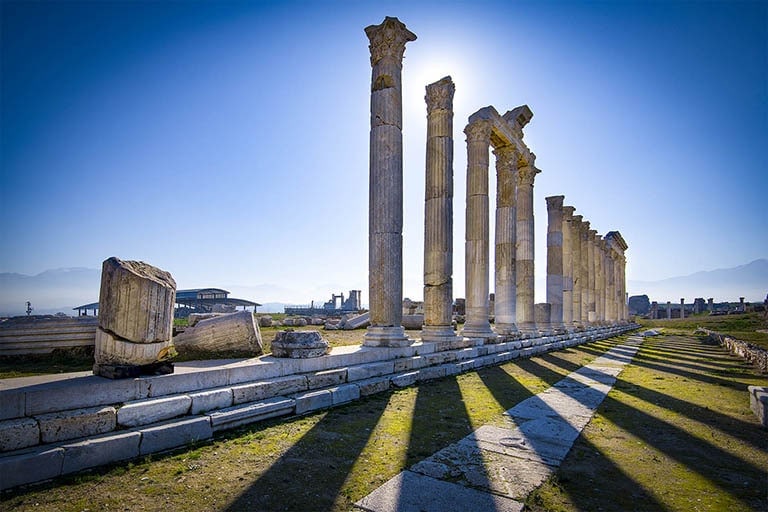
Laodicea
Laodicea is a fascinating and interesting ancient site. It lacks charm, but it makes up for that in scale, and thought-provoking reconstruction works. After all, this is an important ancient city that was reduced to ruins after a series of devastating earthquakes. (Read more)
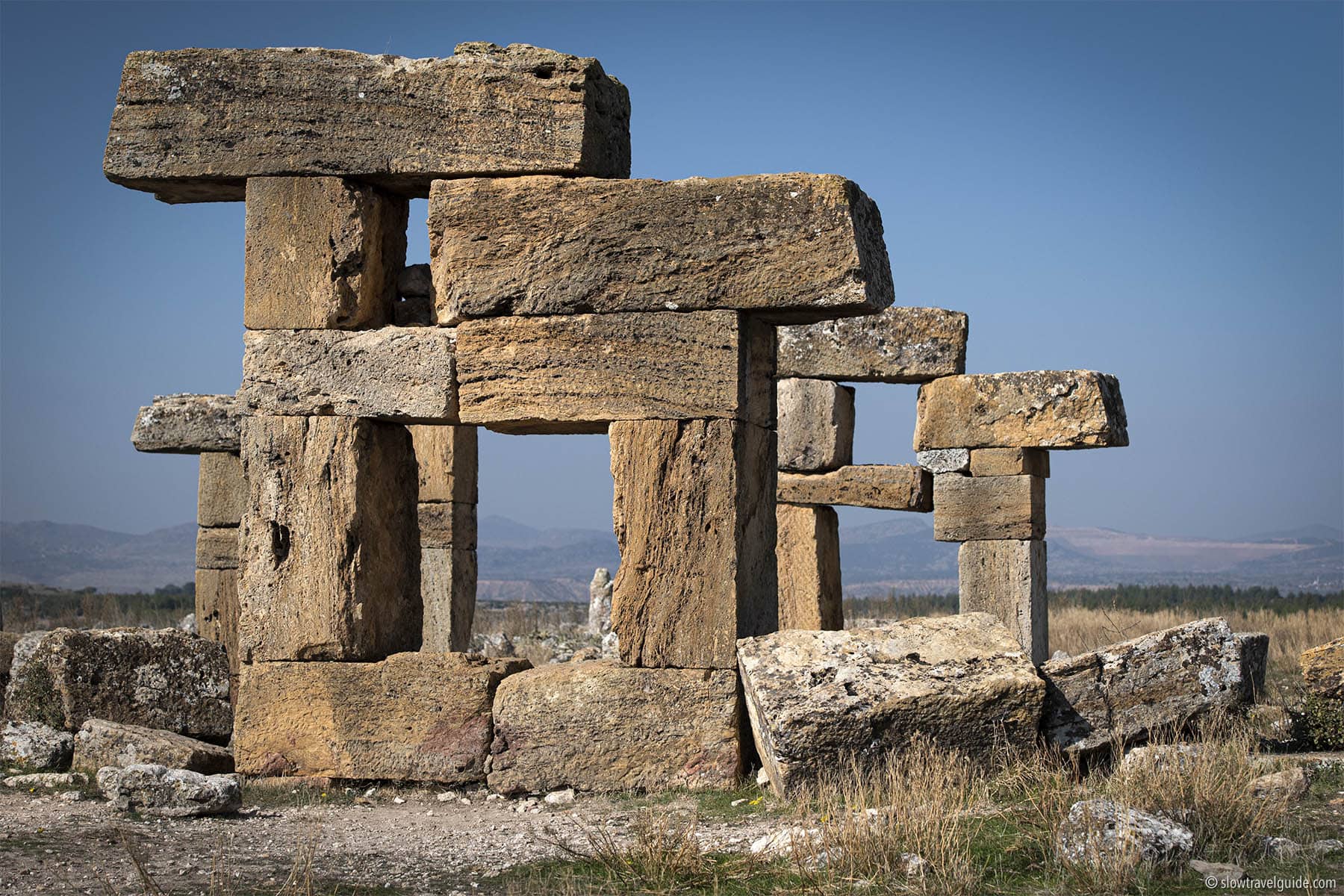
Blaundos
The ancient city of Blaundos benefits from a spectacular location, situated on a horseshoe-shaped bend on the top of the hill, surrounded on three sides by the Grand Usak-Ulubey Canyon. (Read more)
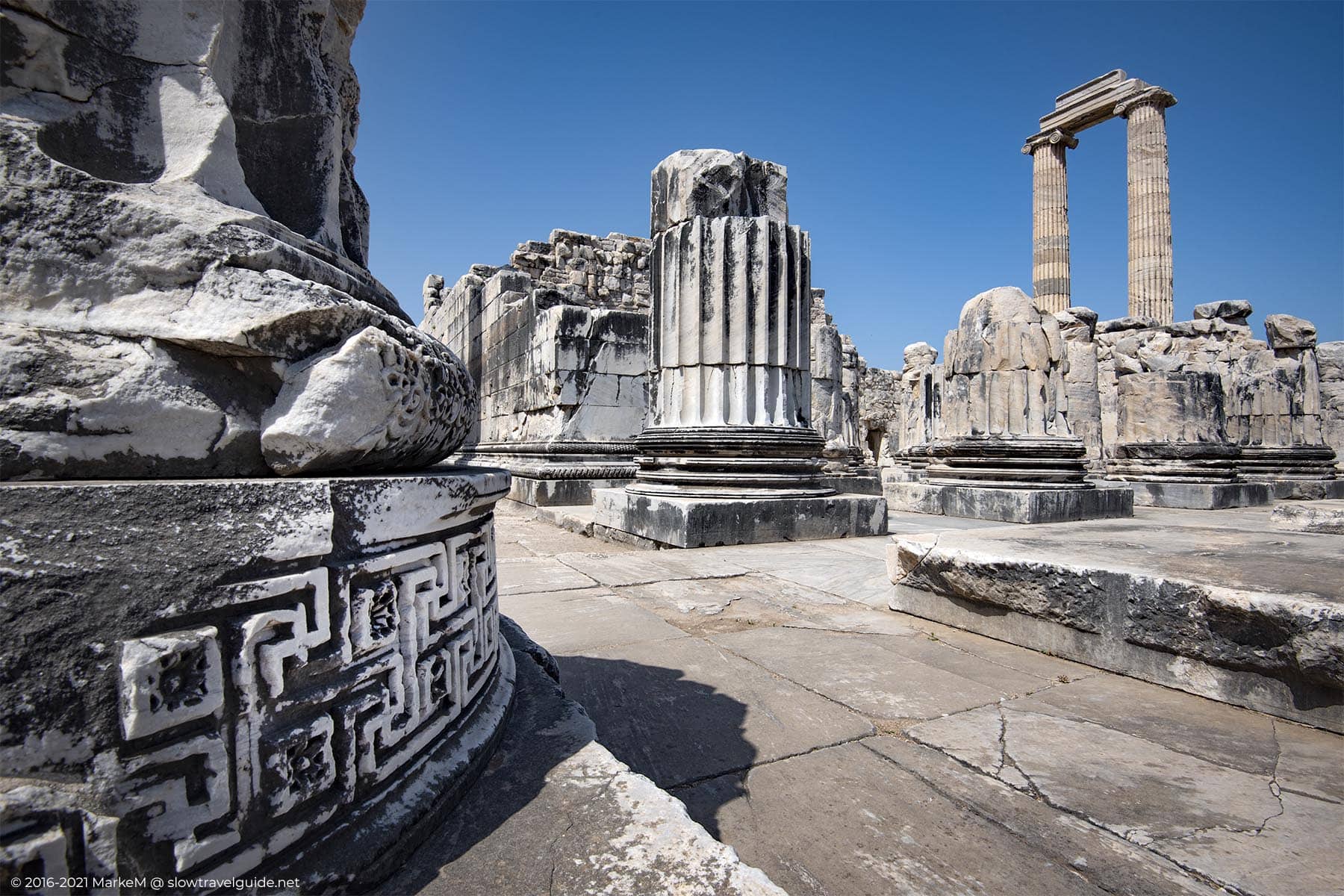
Didyma
If you like to do things a little bit more relaxed, you can easily forget the golden beaches and stroll around in Didyma and, besides the stunning Apollo Temple, visit the tiny streets of the old village..(Read more)
© 2016-2022 All rights reserved by slowtravelguide.net.
The content of this website is copyright protected and the property of slowtravelguide.net.No part of this website may be reproduced in whole or in part in any manner without the written permission of the copyright owner.
Copyright ©2016-2022 Tüm hakları saklıdır. Bu (slowtravelguide.net.) web sitesinin içeriği koruma altındadır ve slowtravelguide.net.Buradaki hiçbir içerik (yazı,fotoğraf,video vb.) izinsiz olarak kopyalanamaz, alıntı yapılamaz,başka yerde yayınlanamaz.

